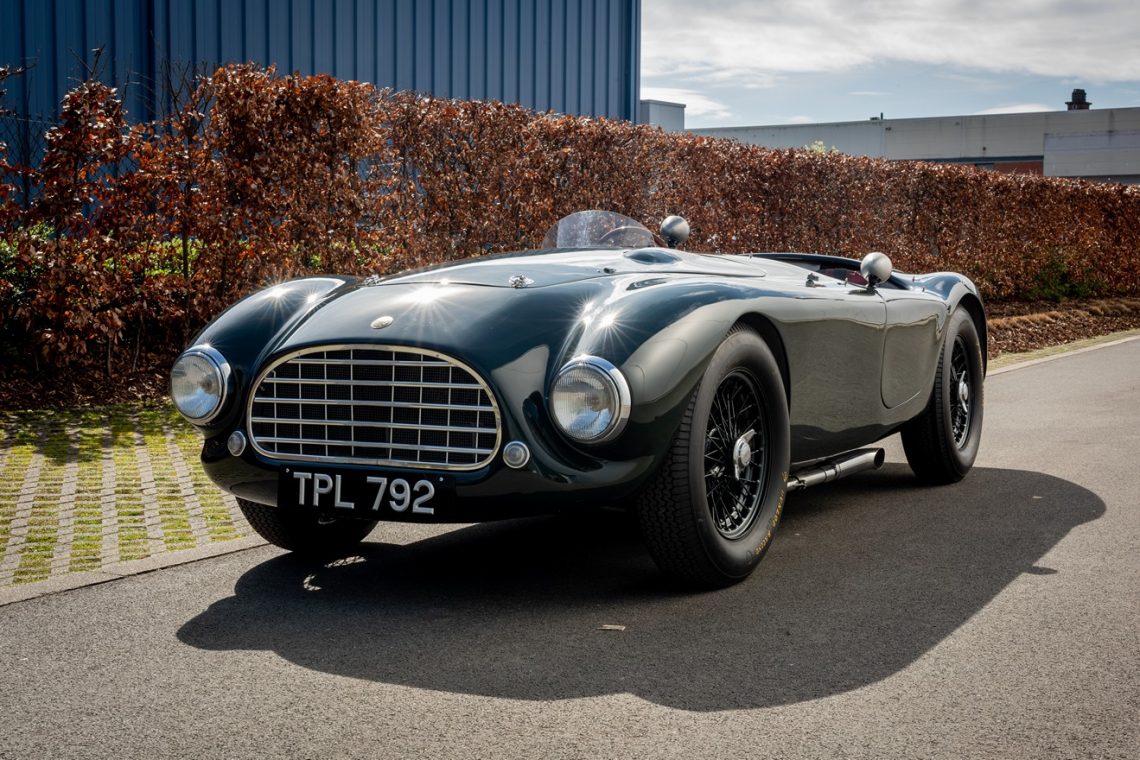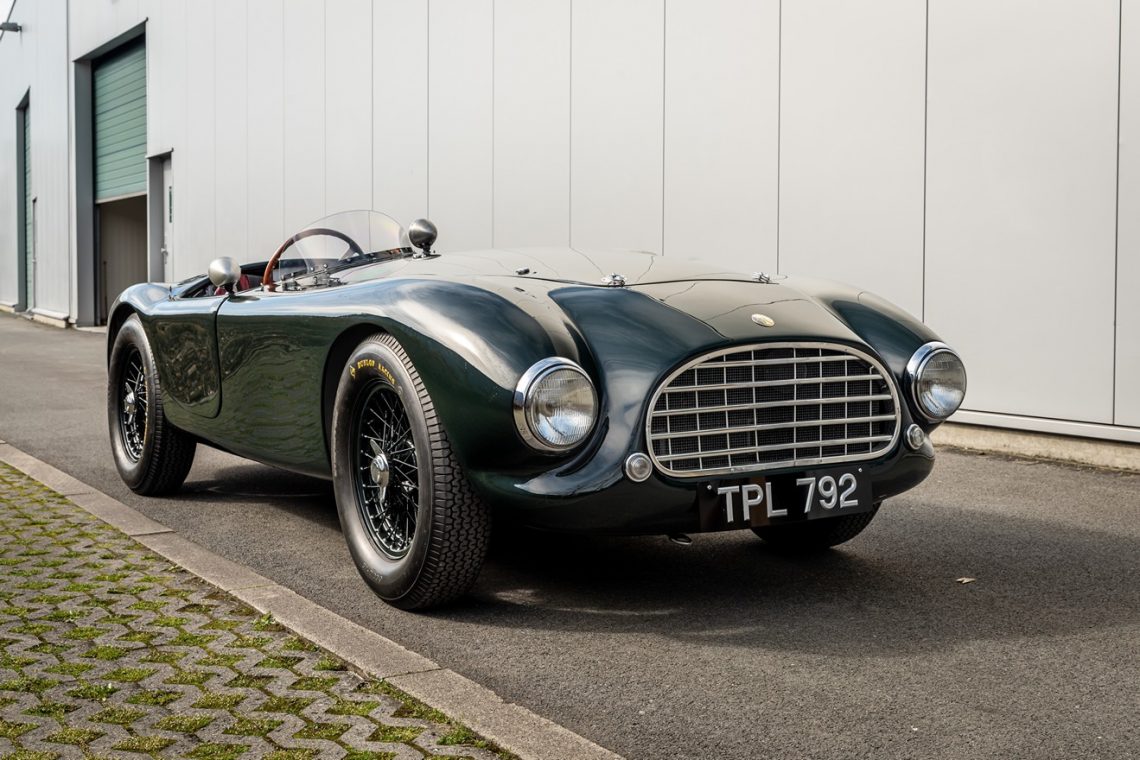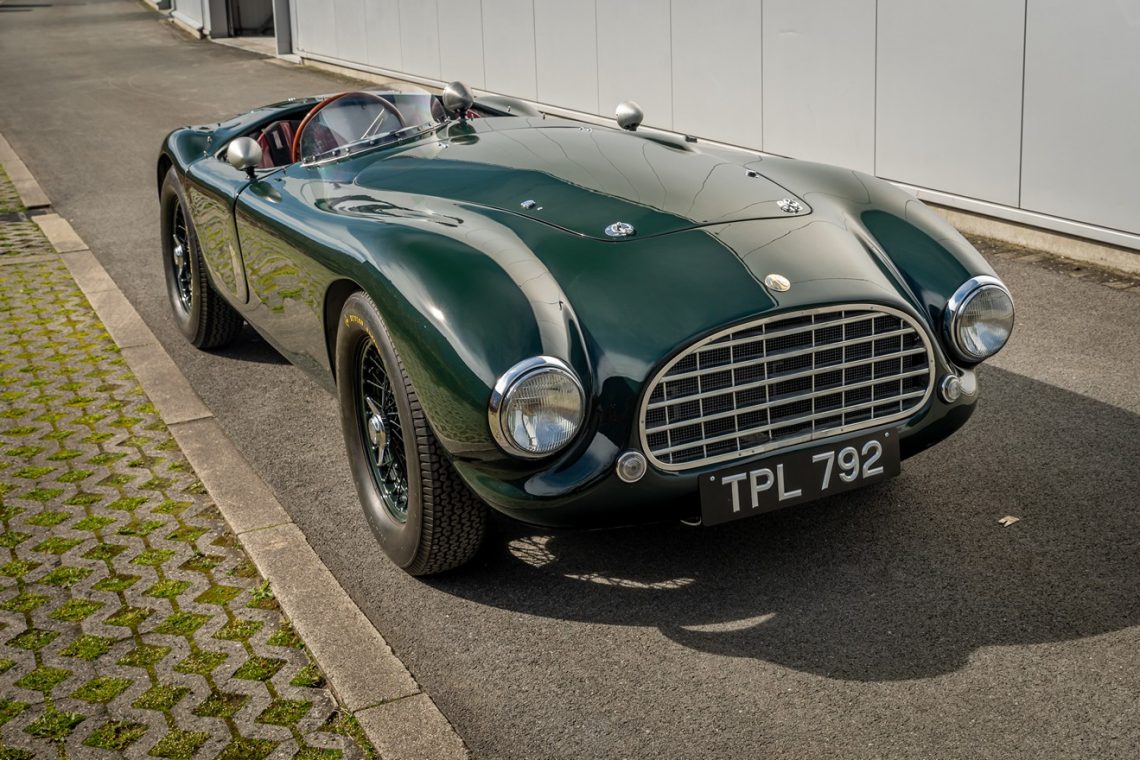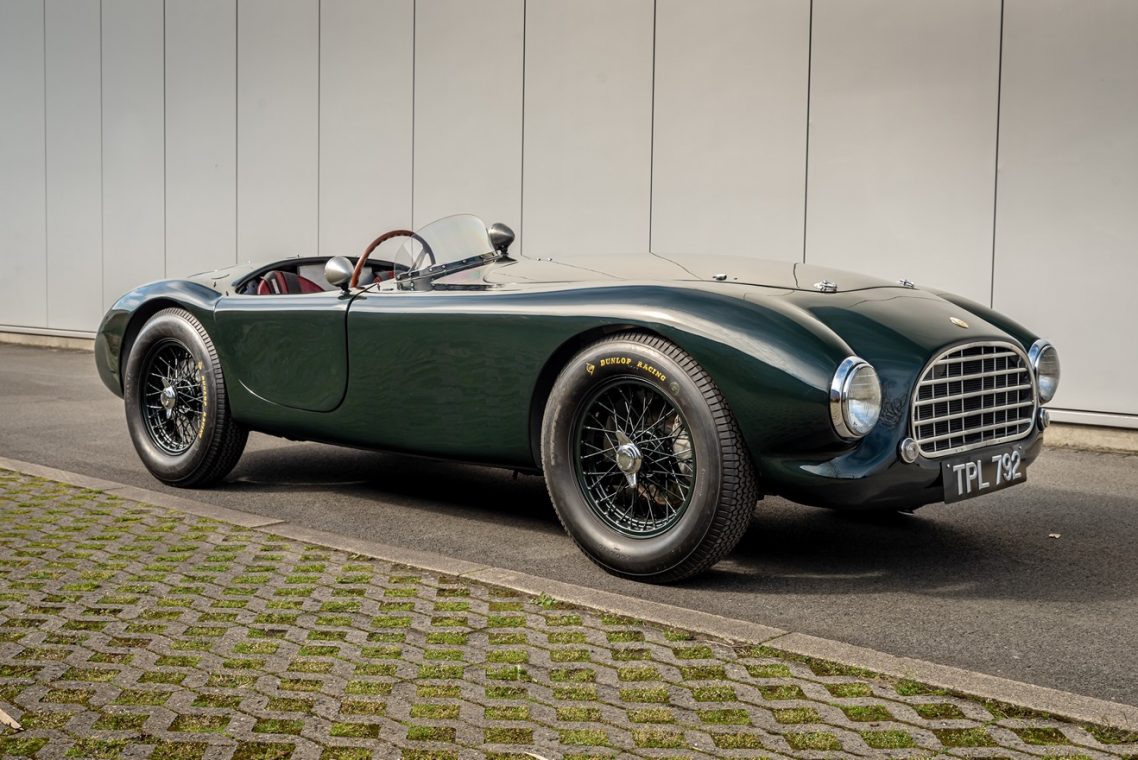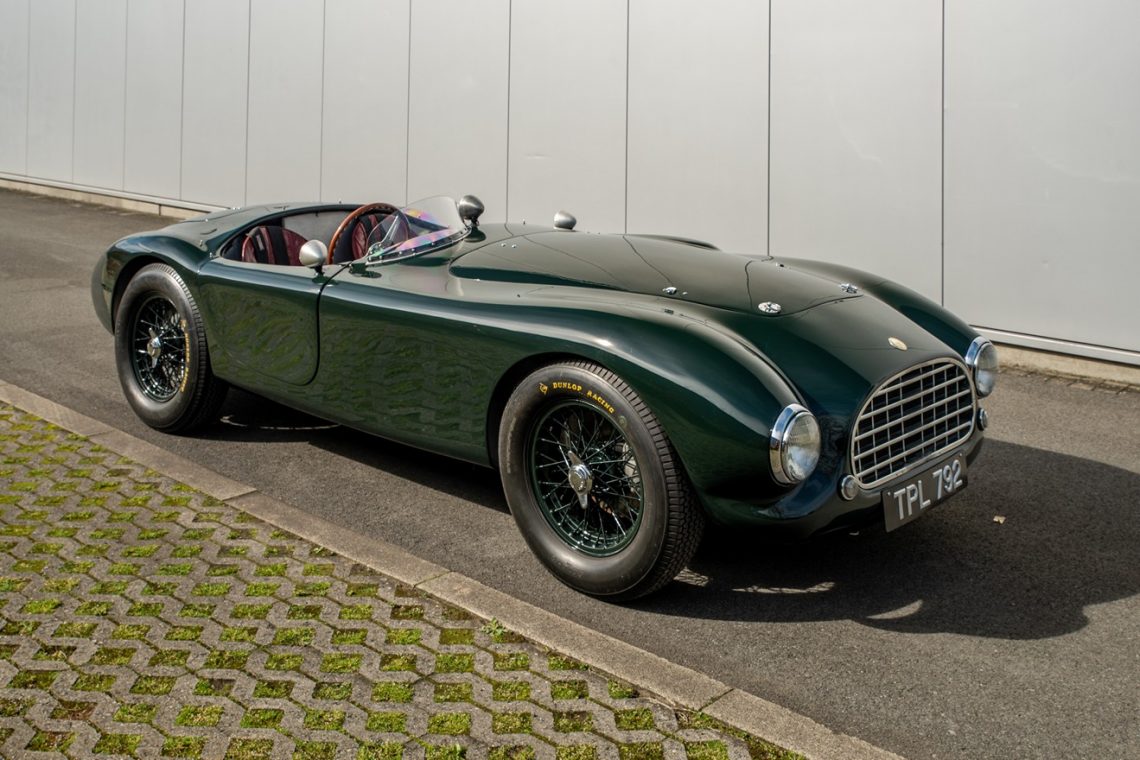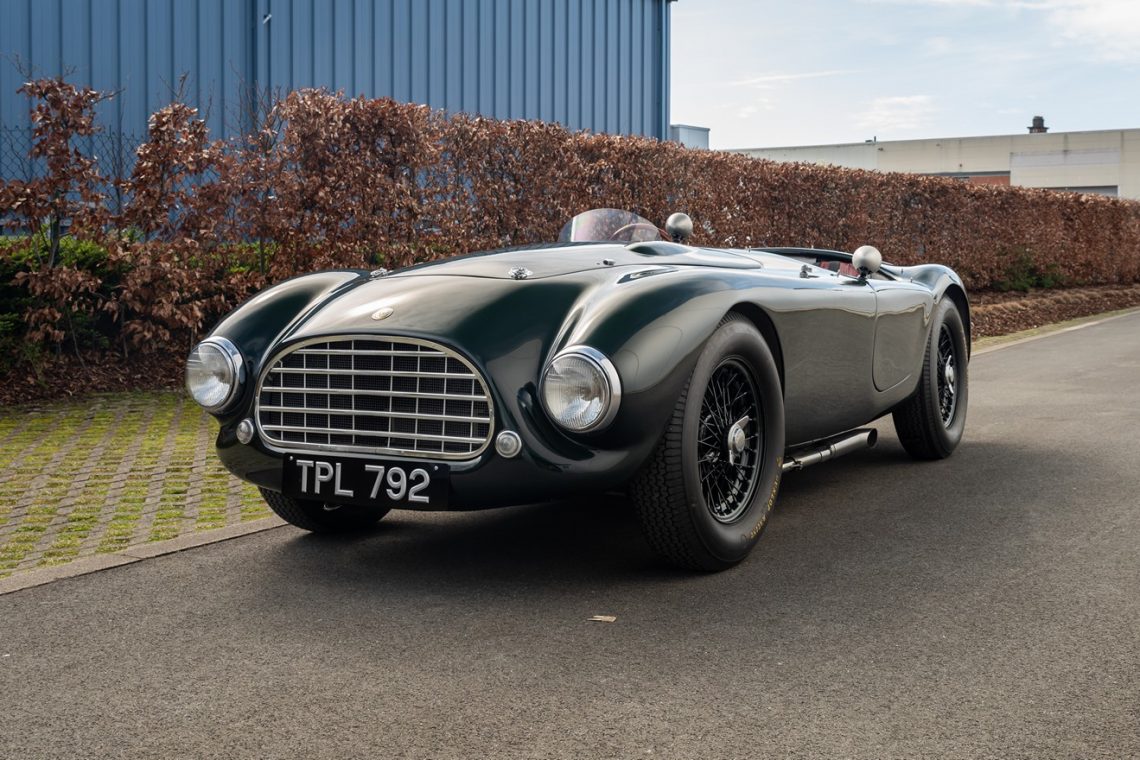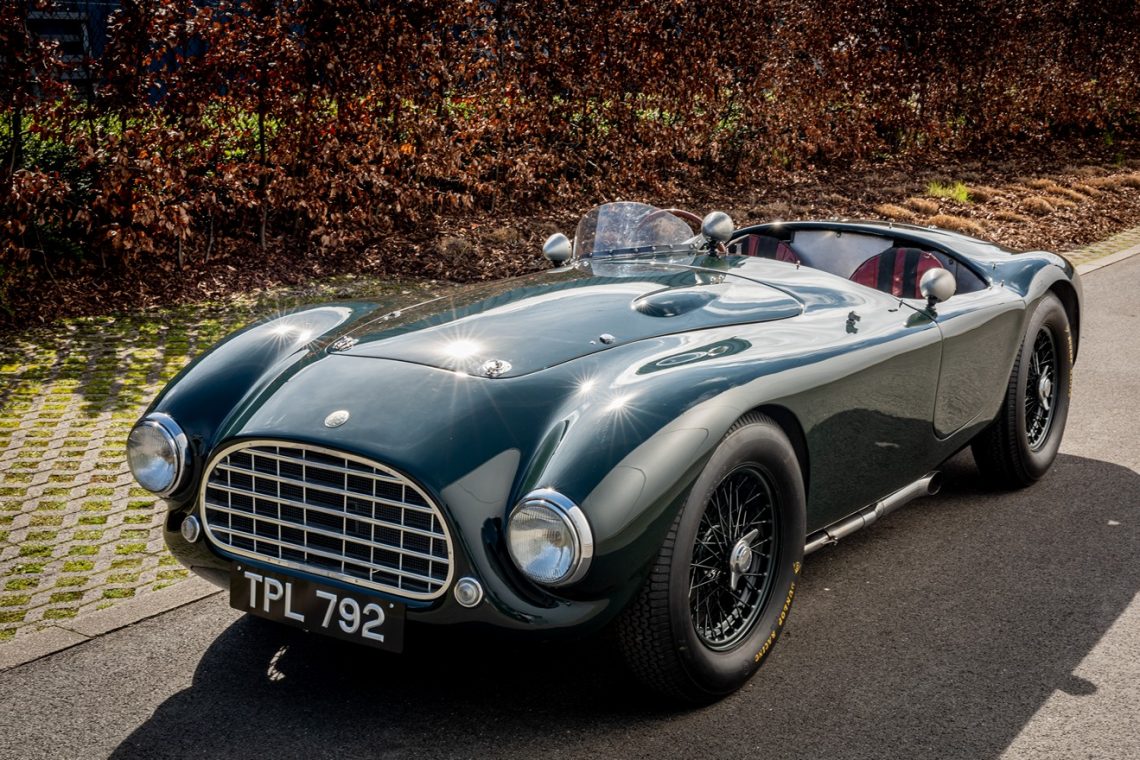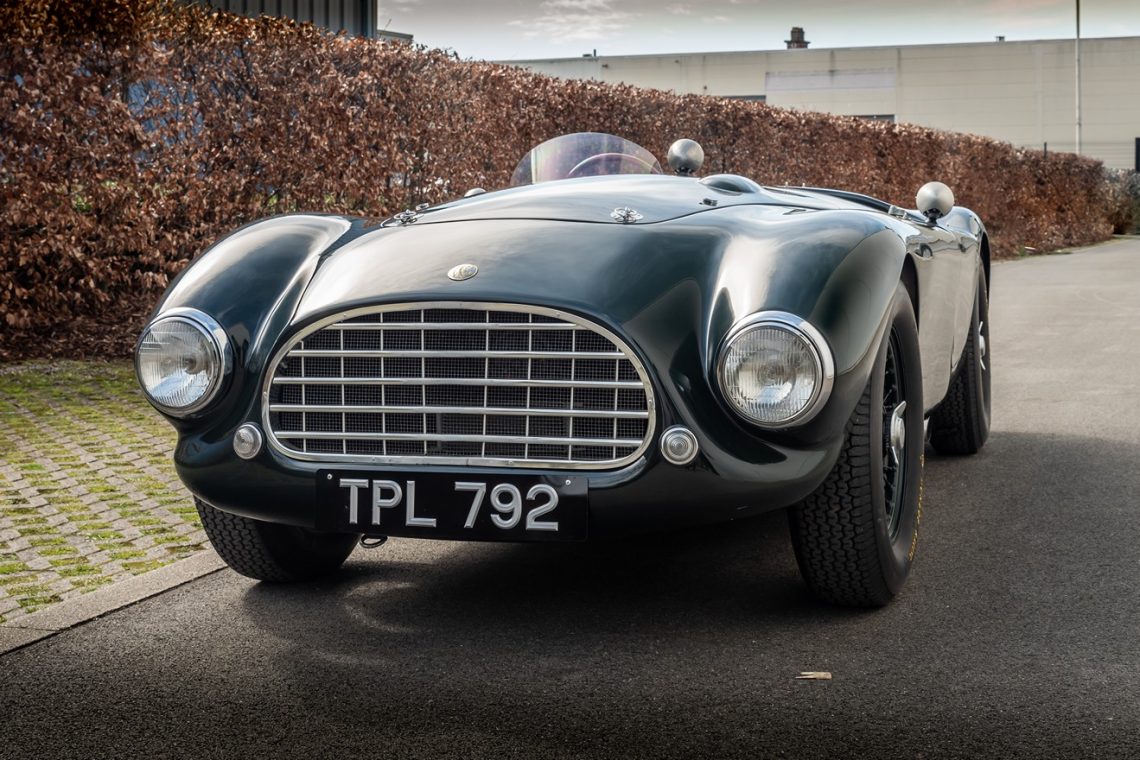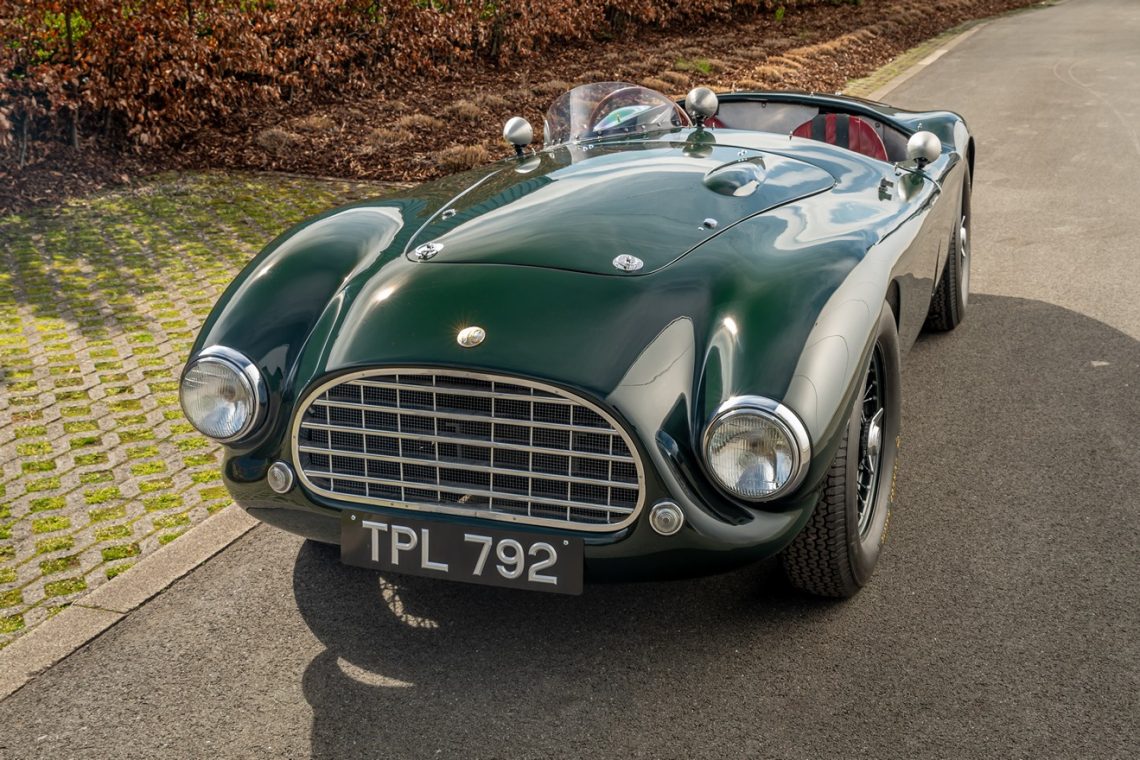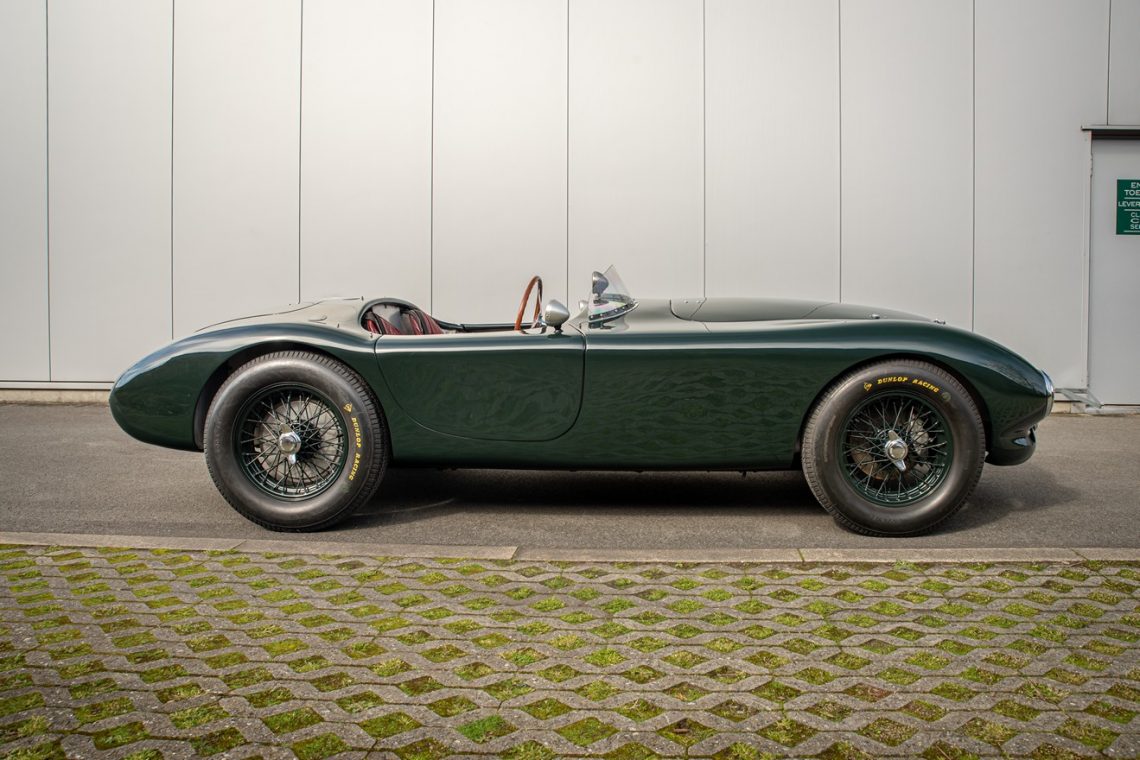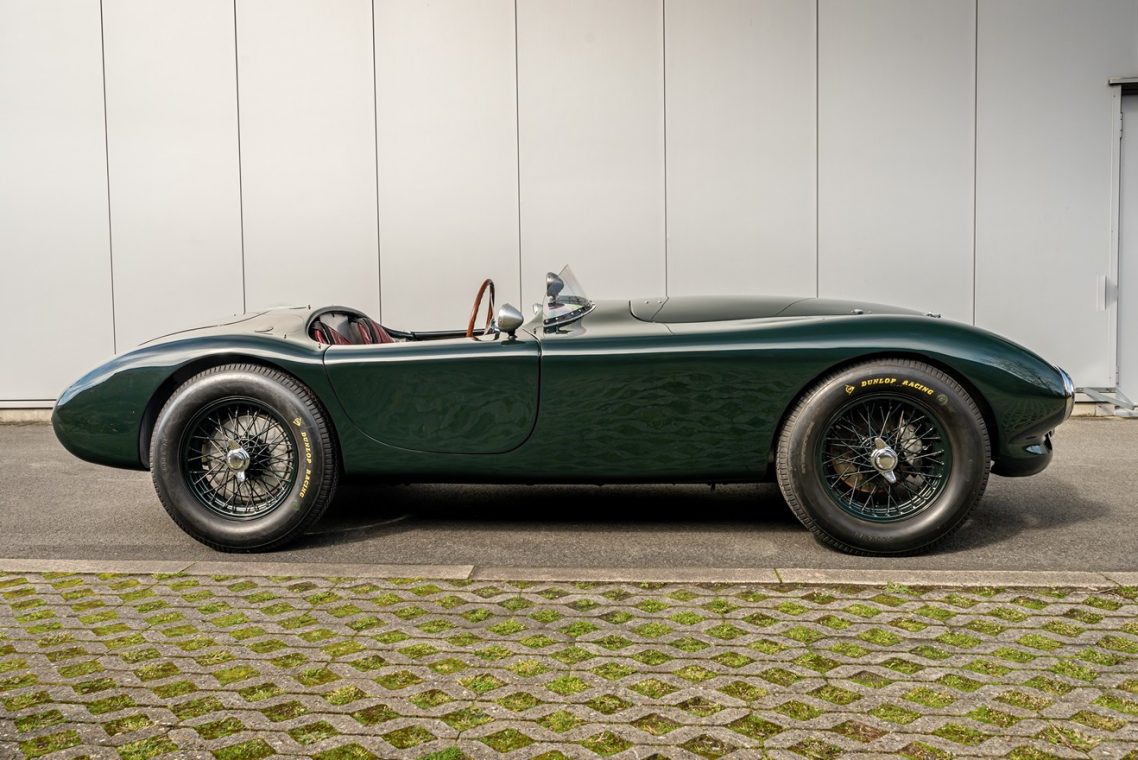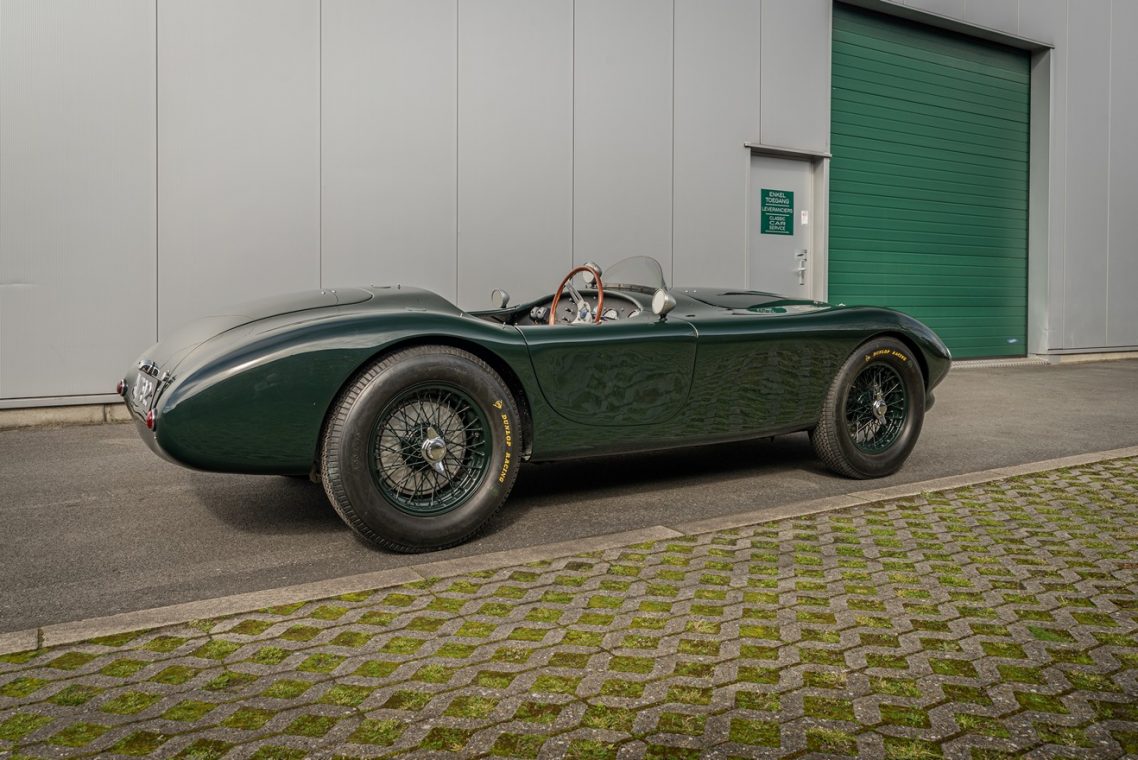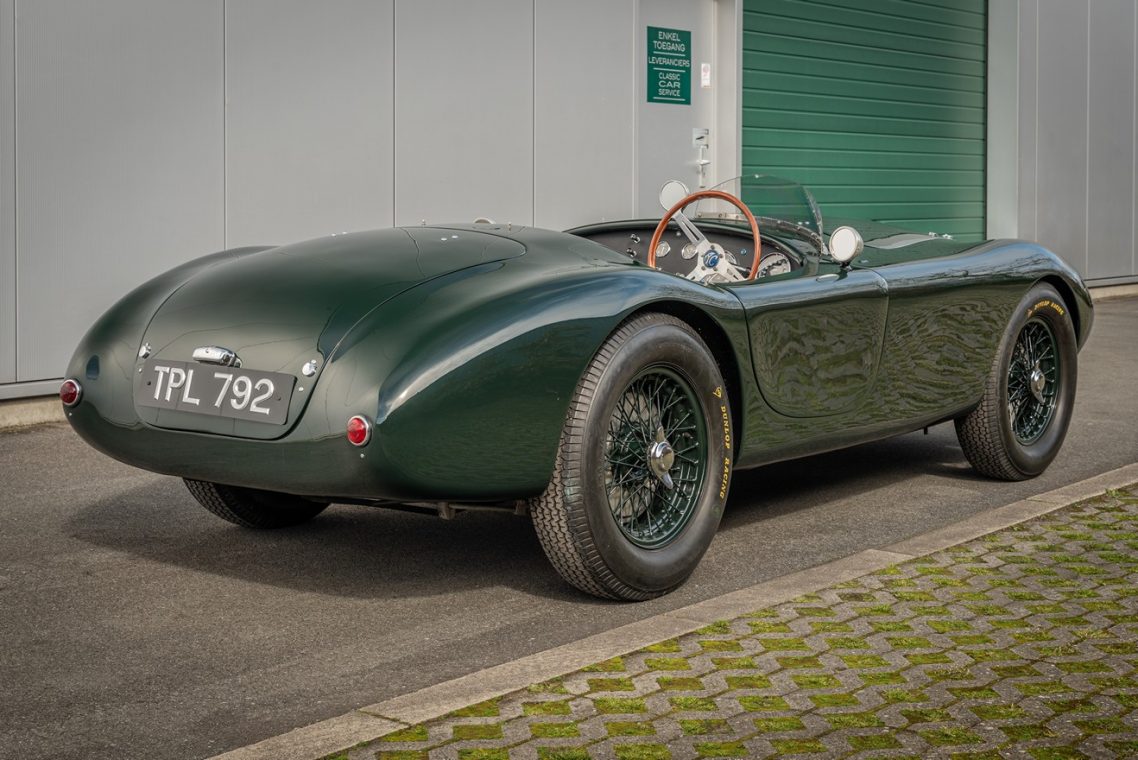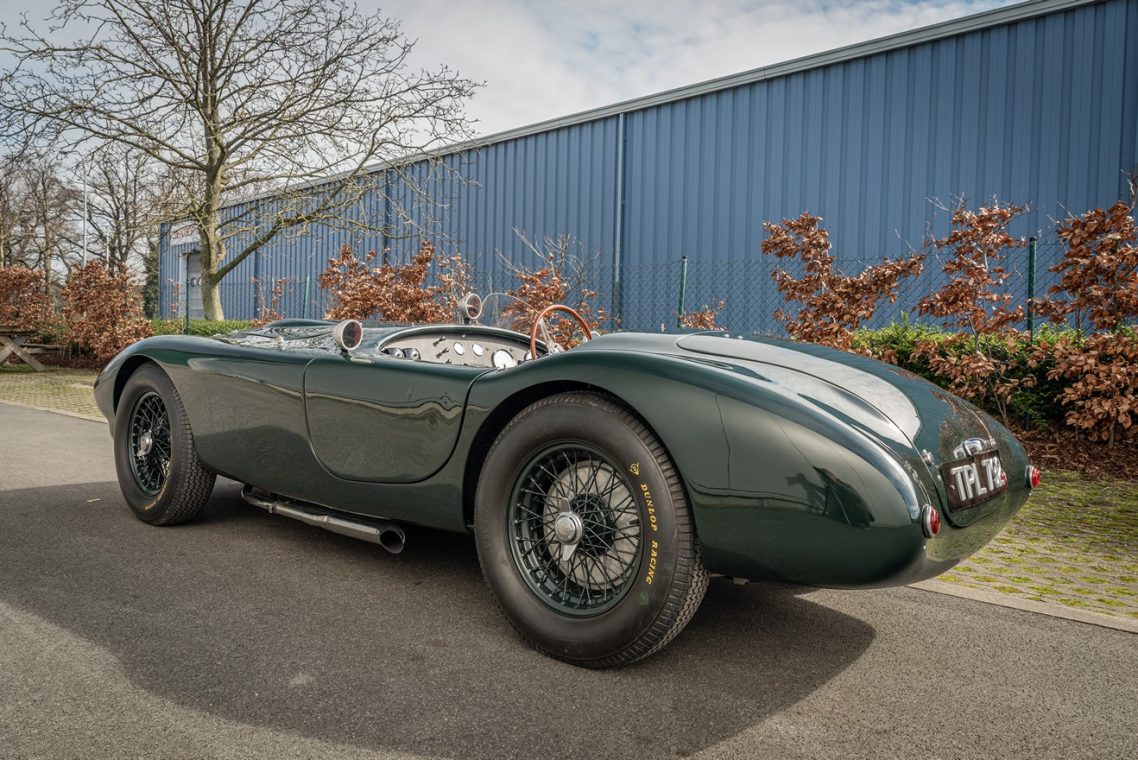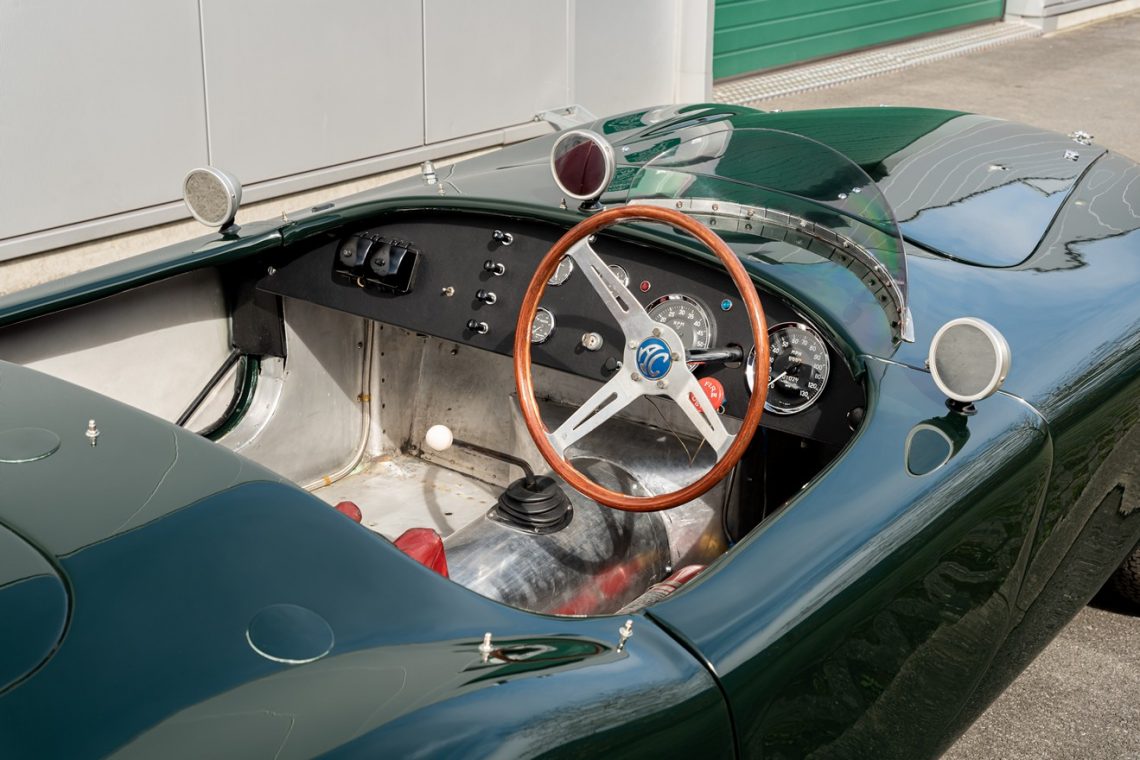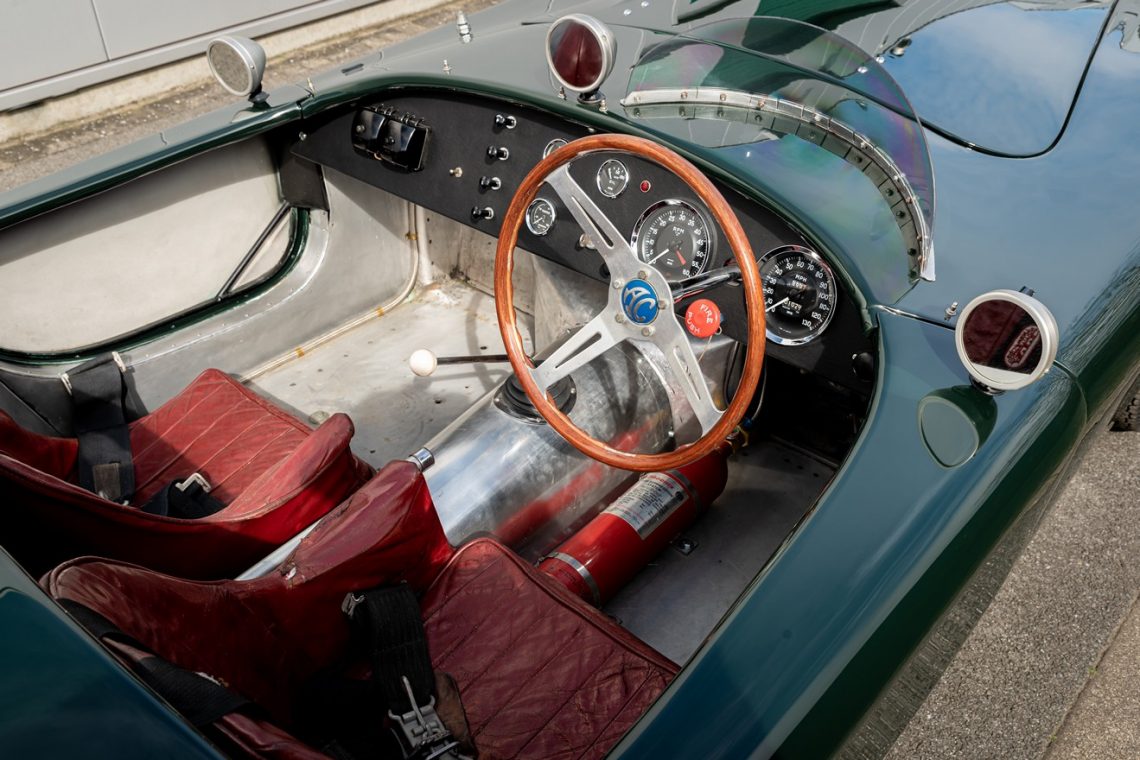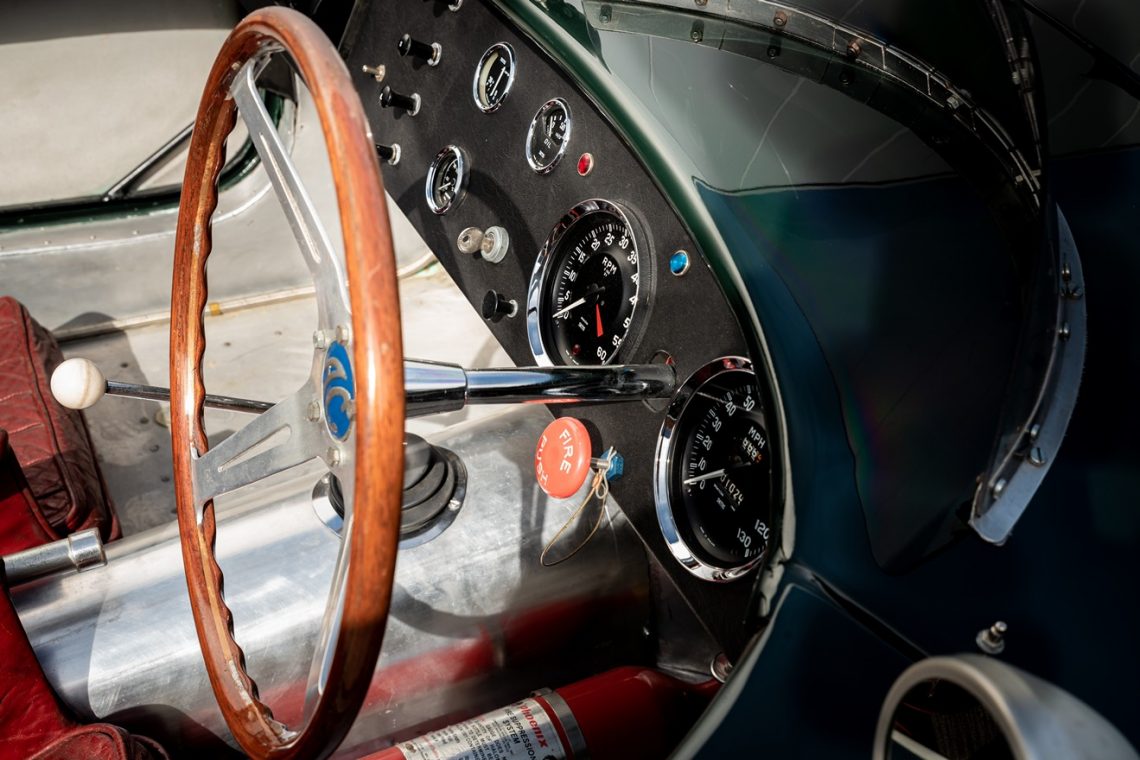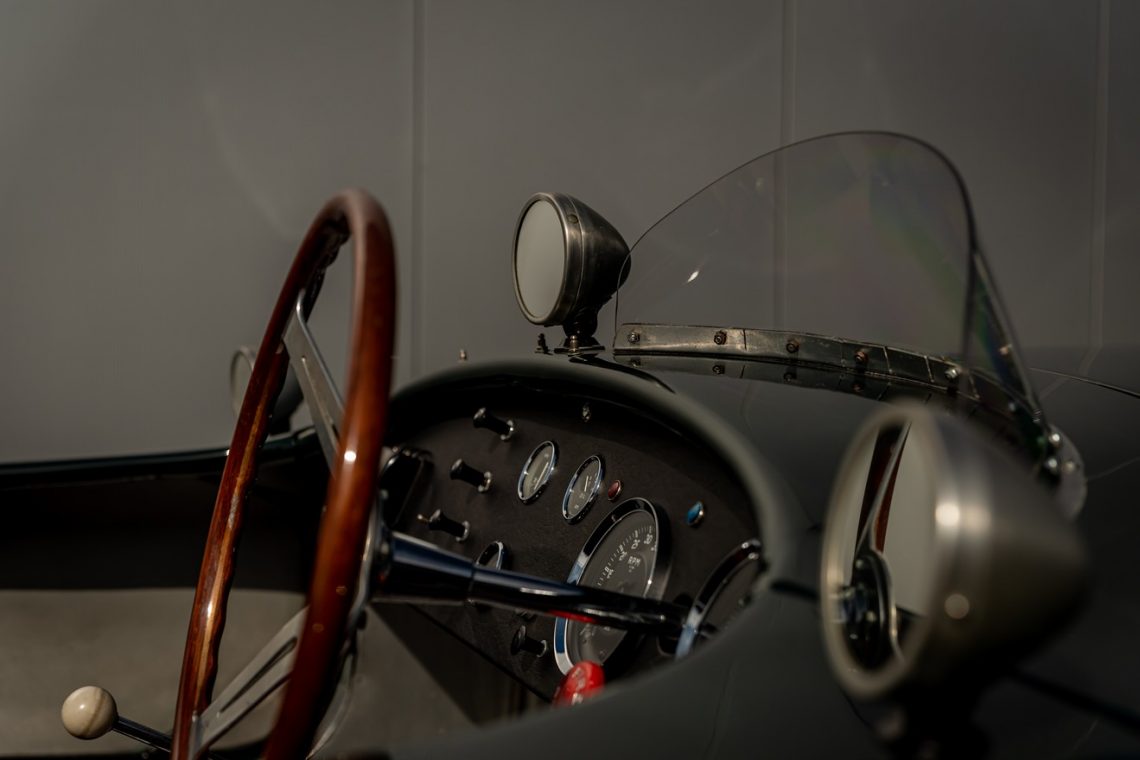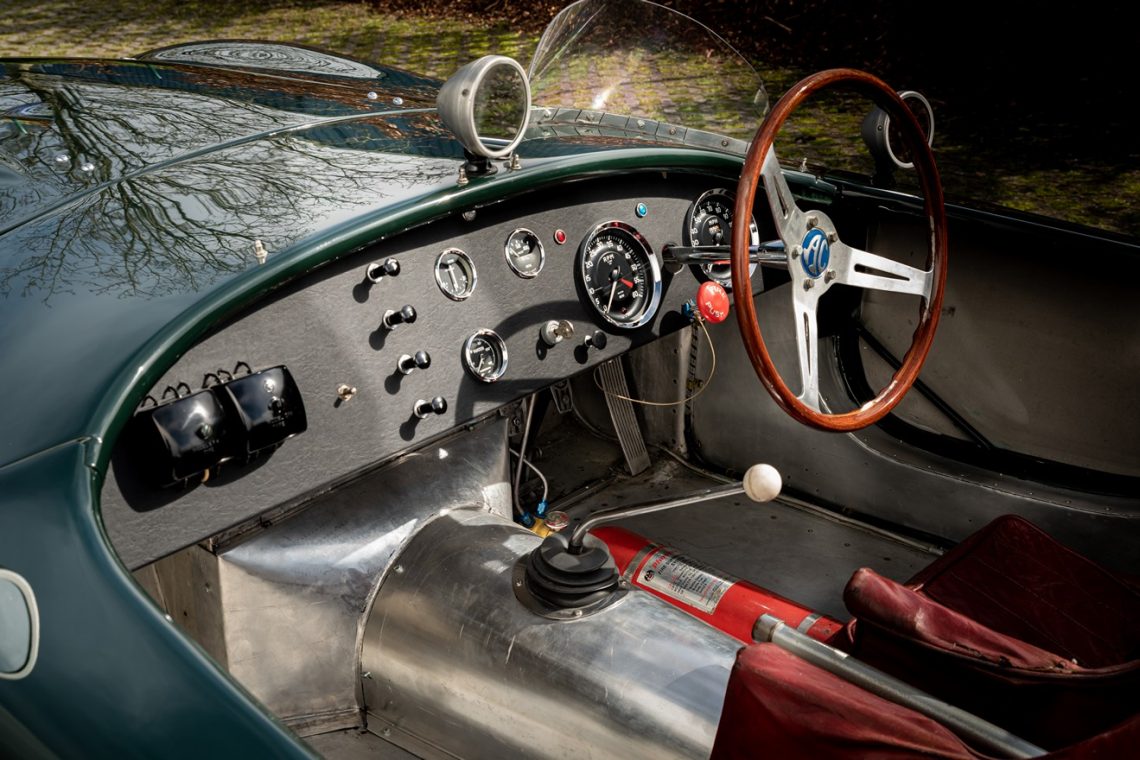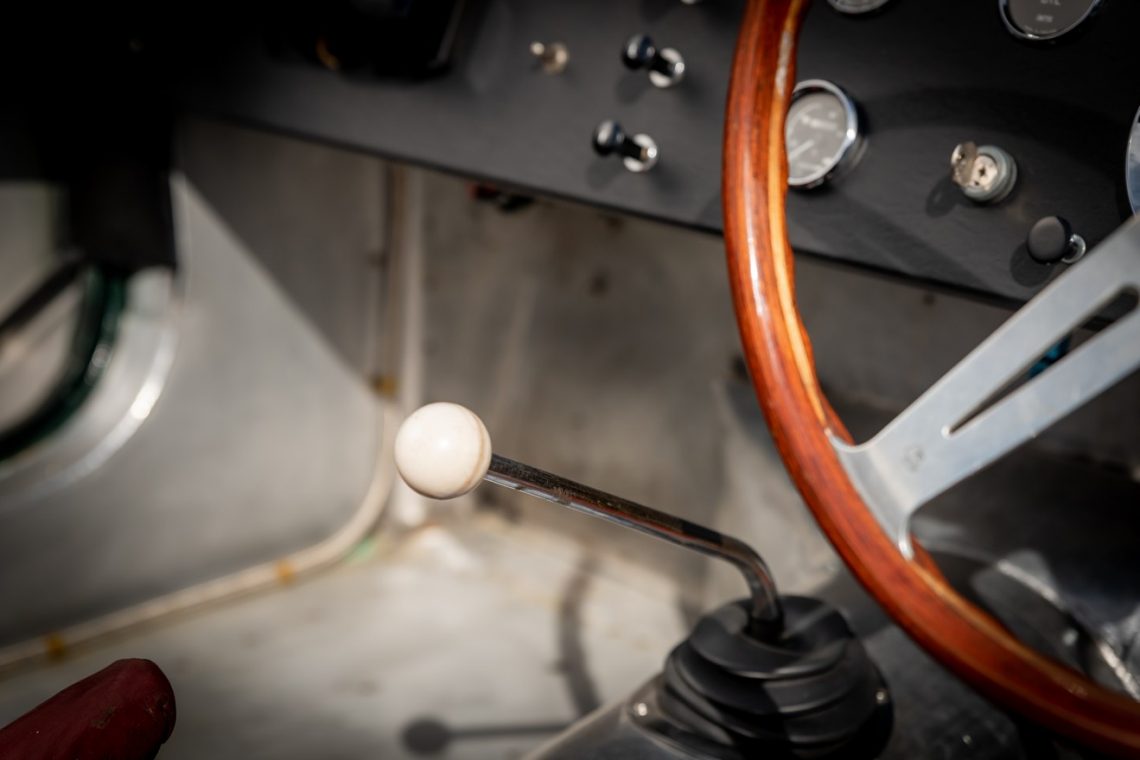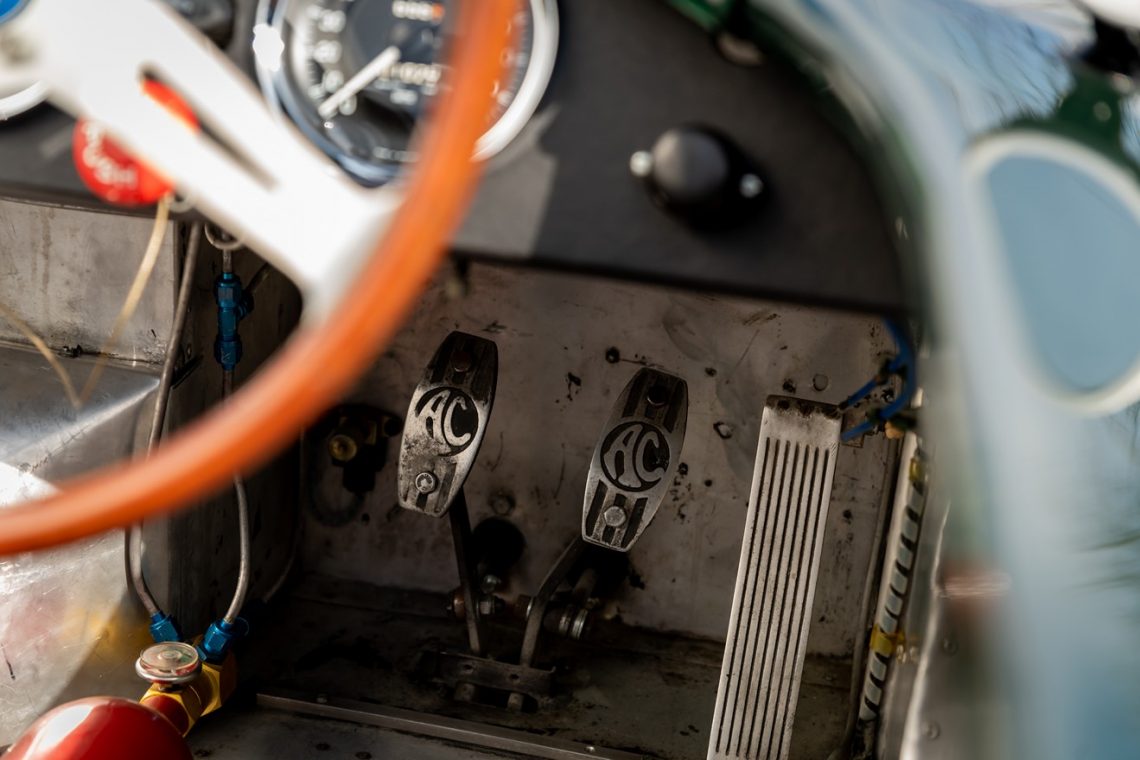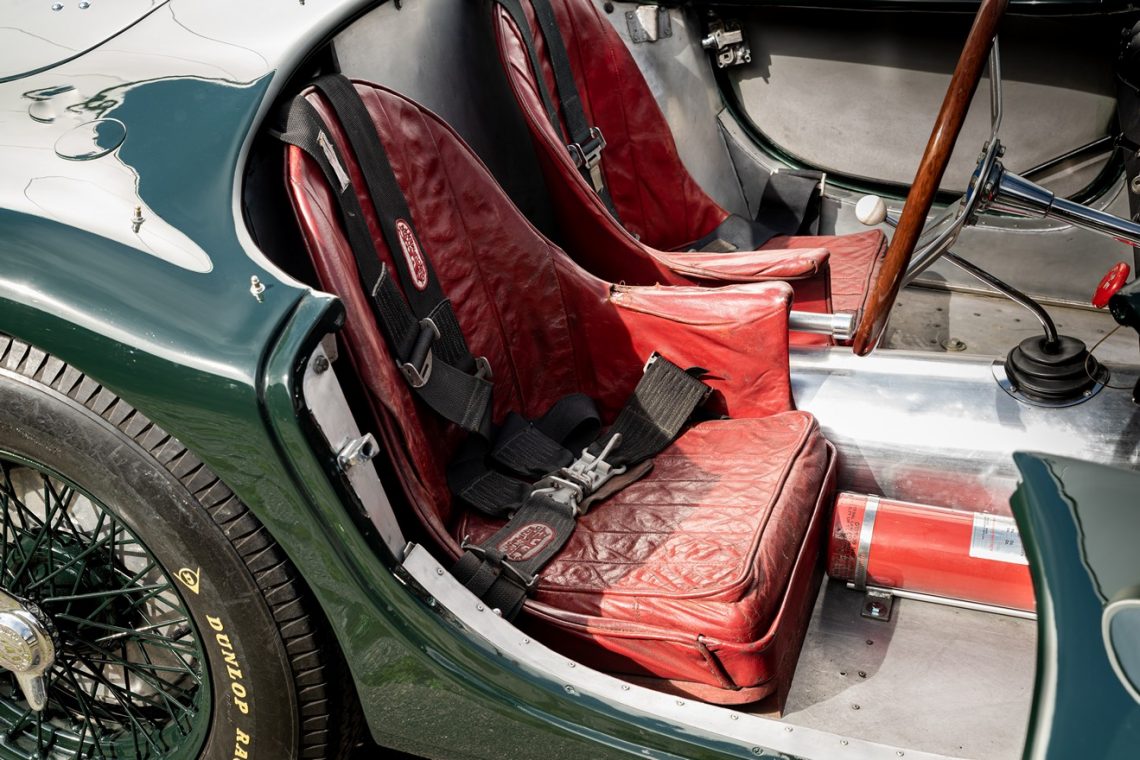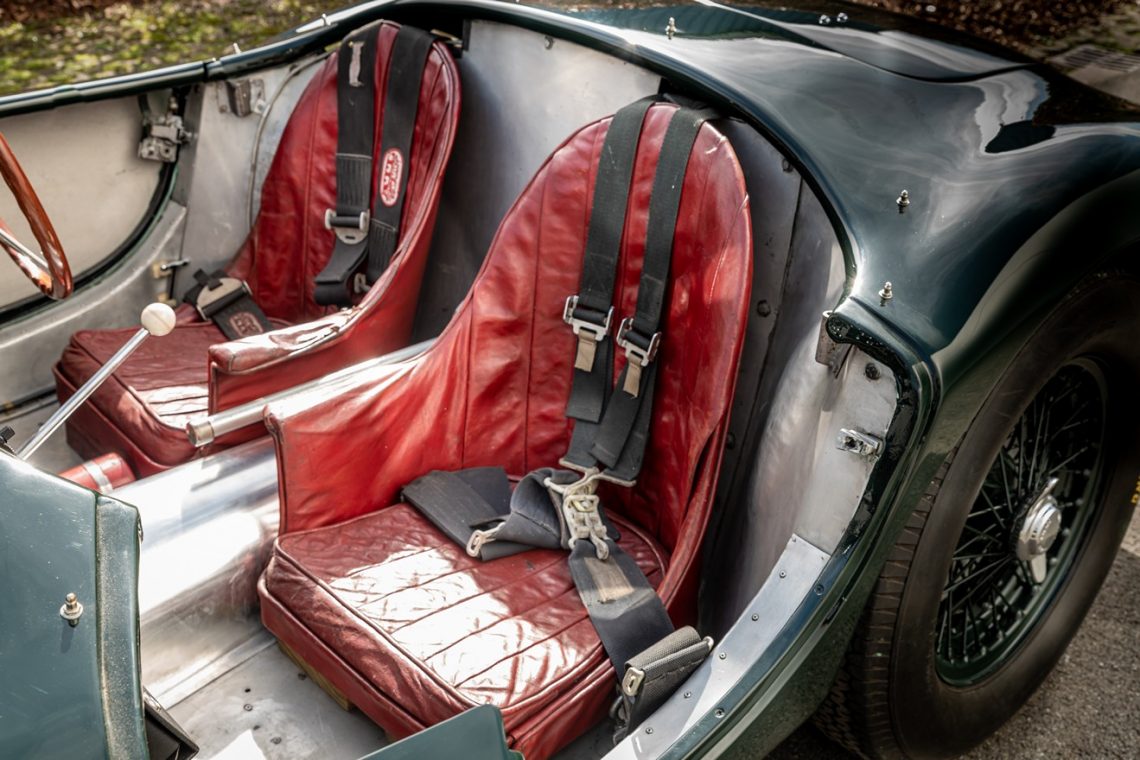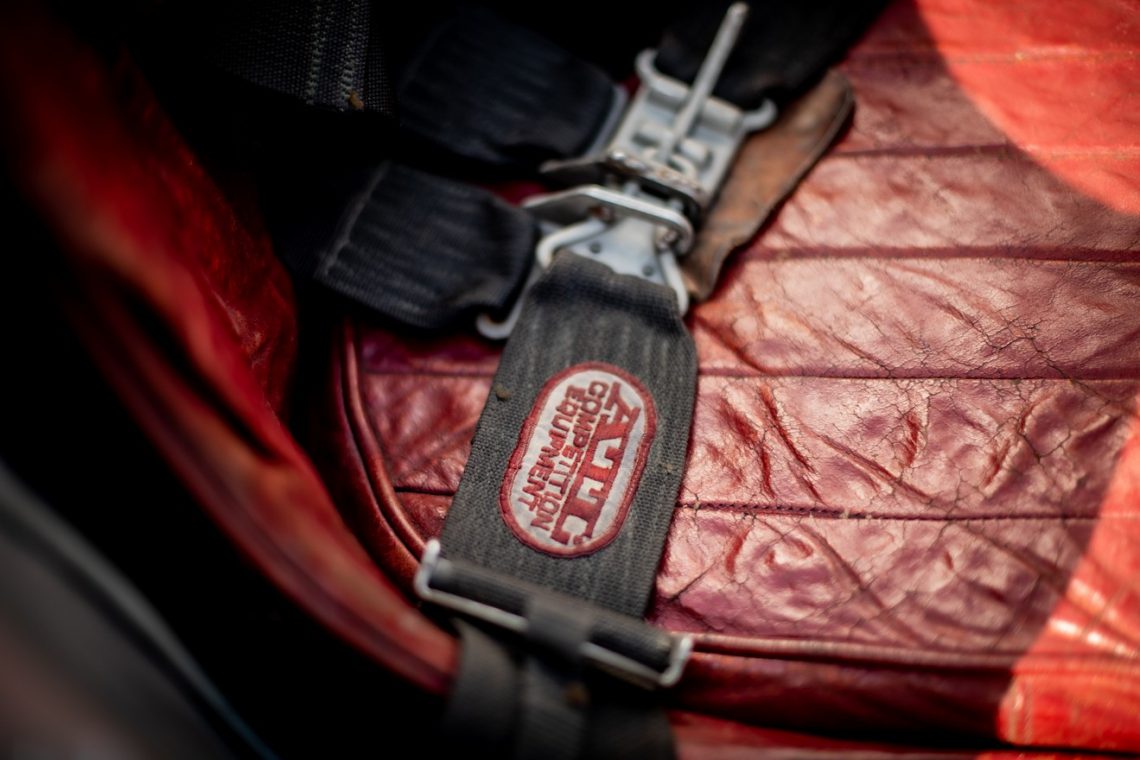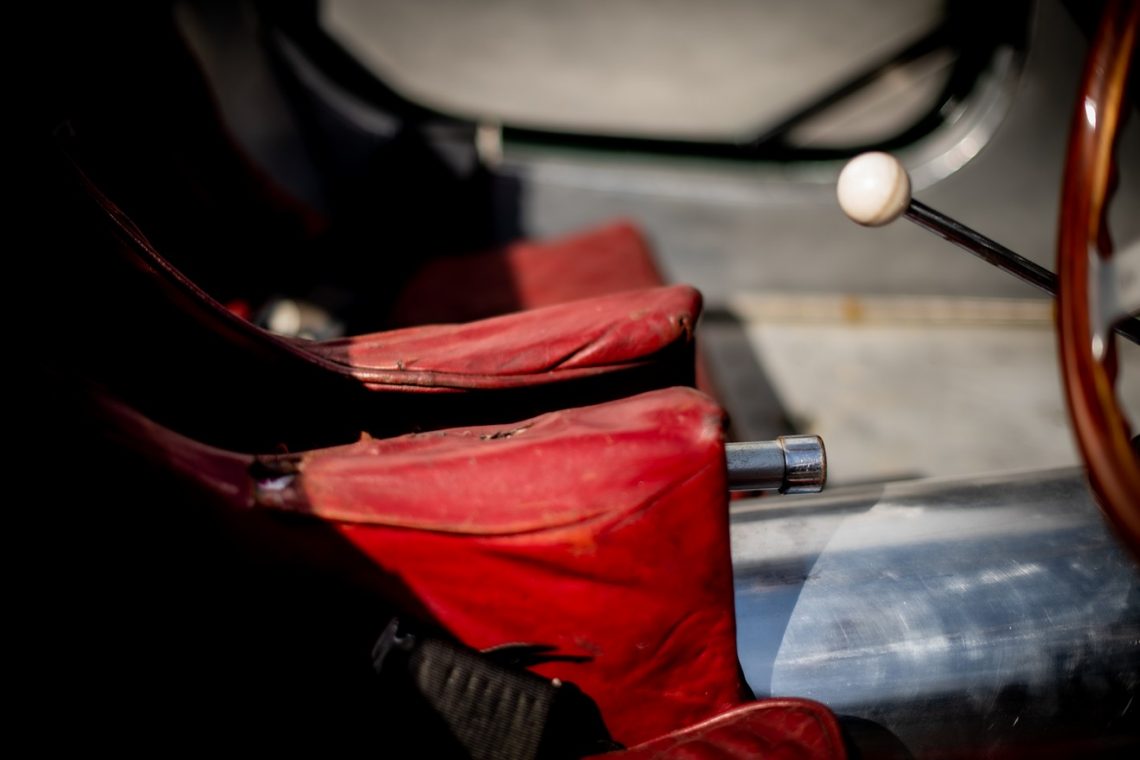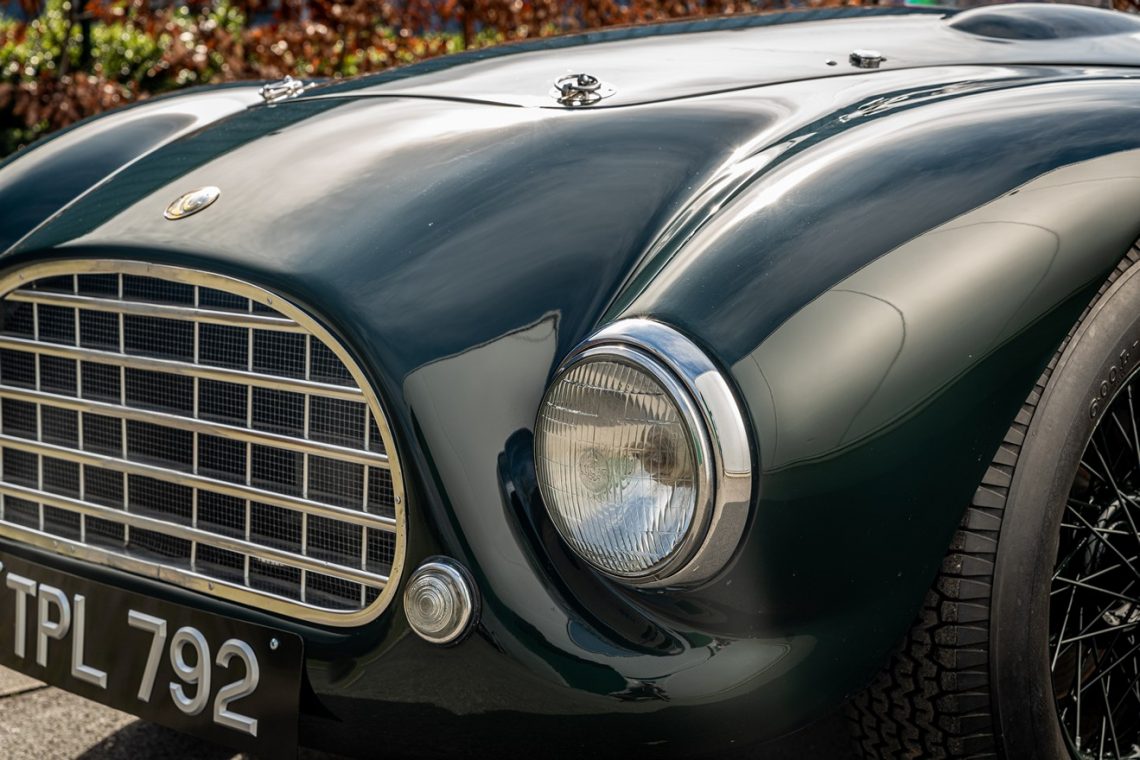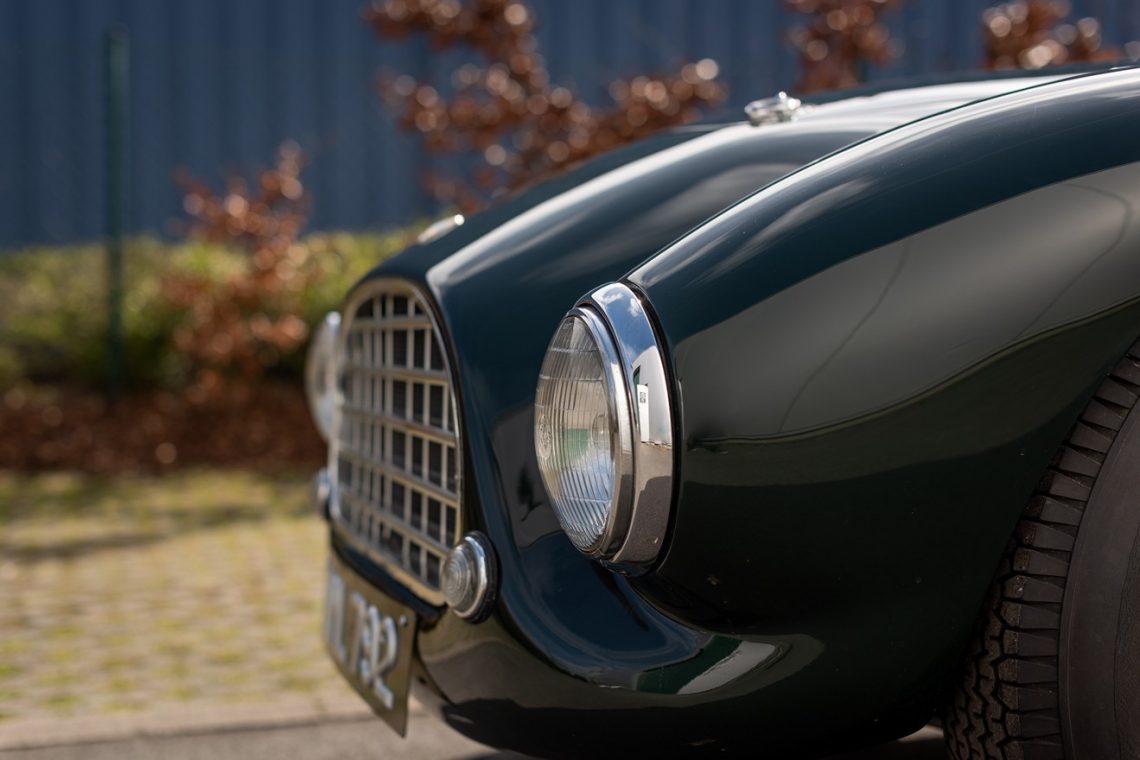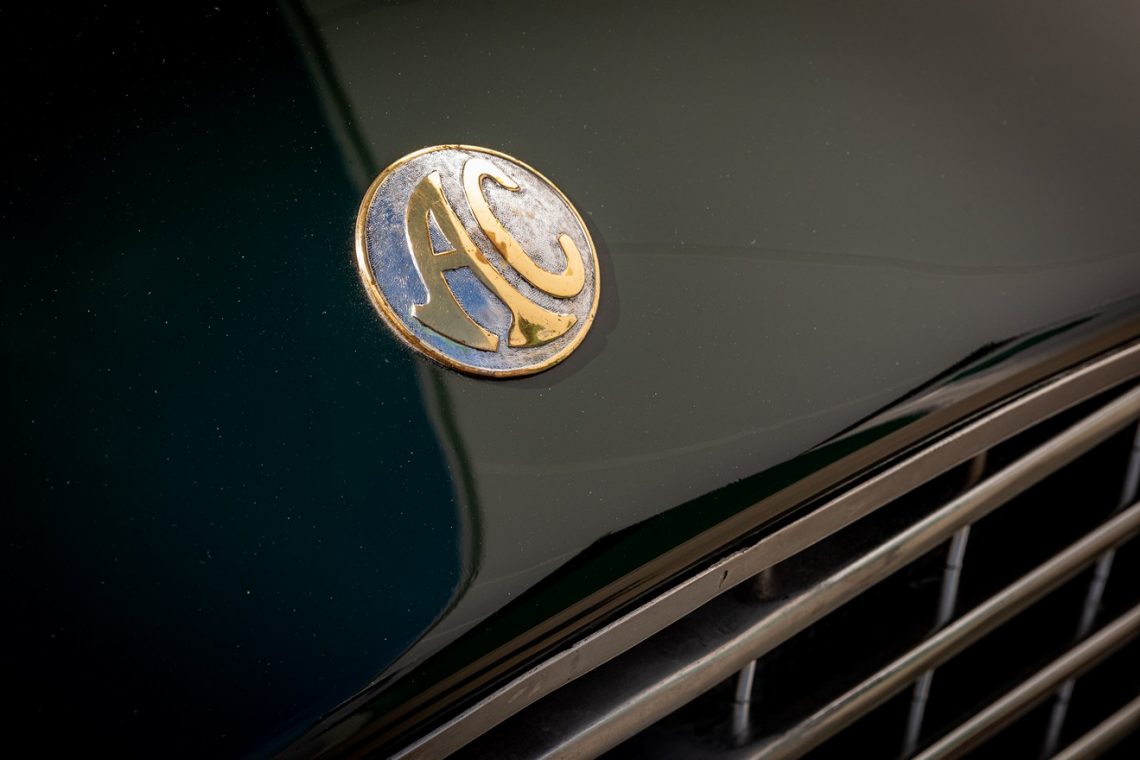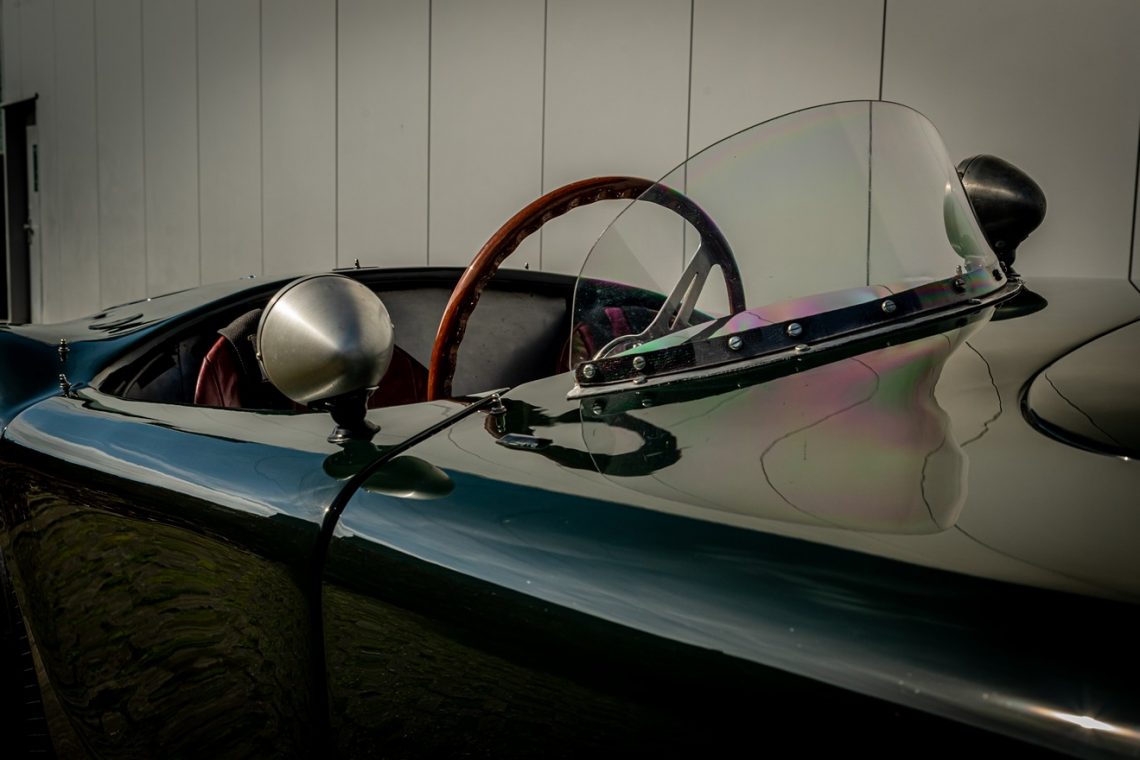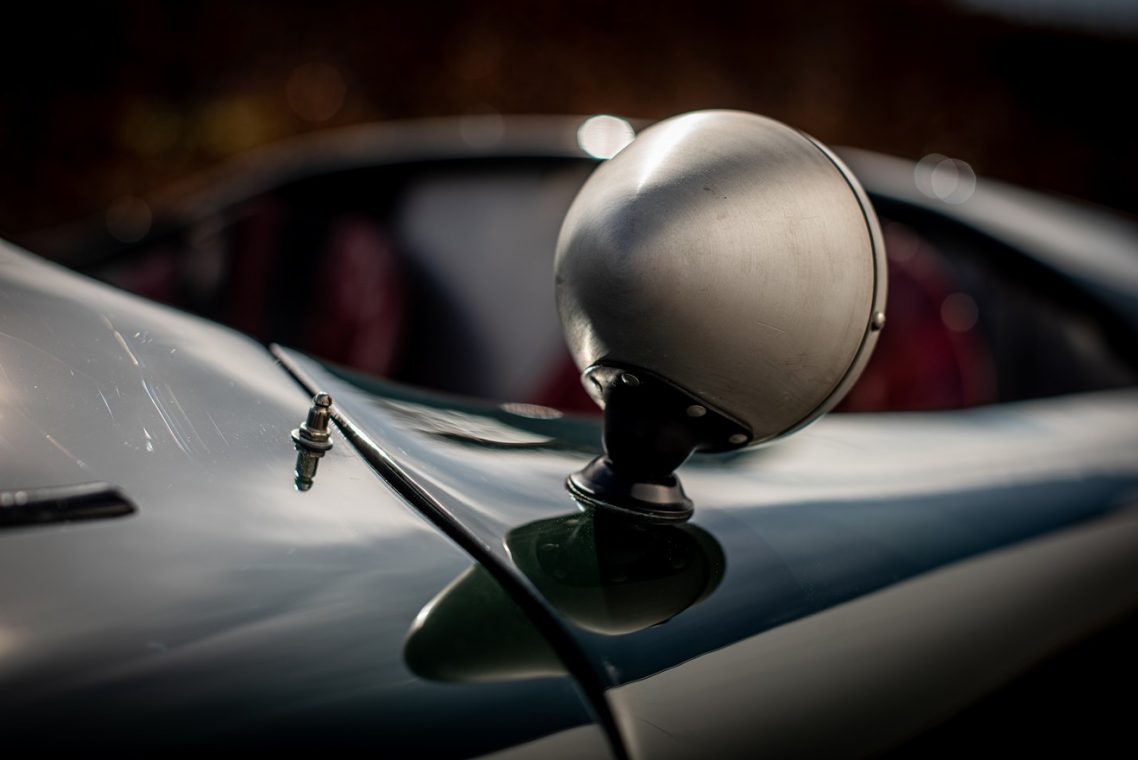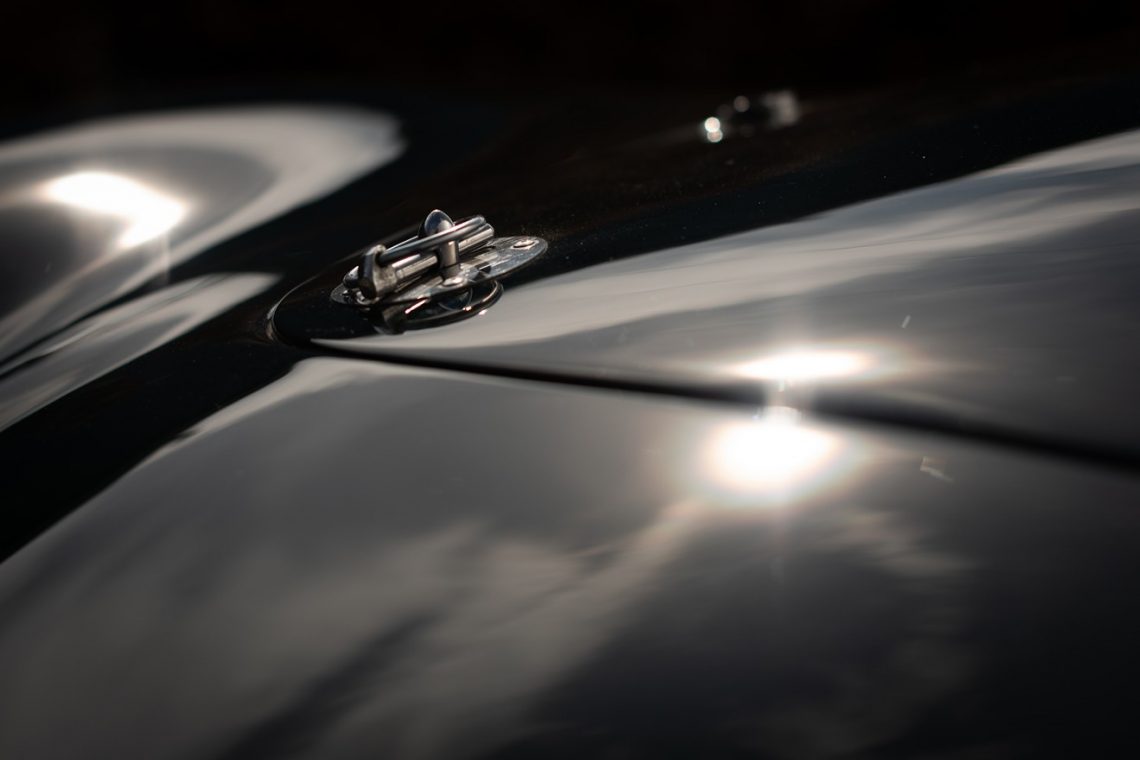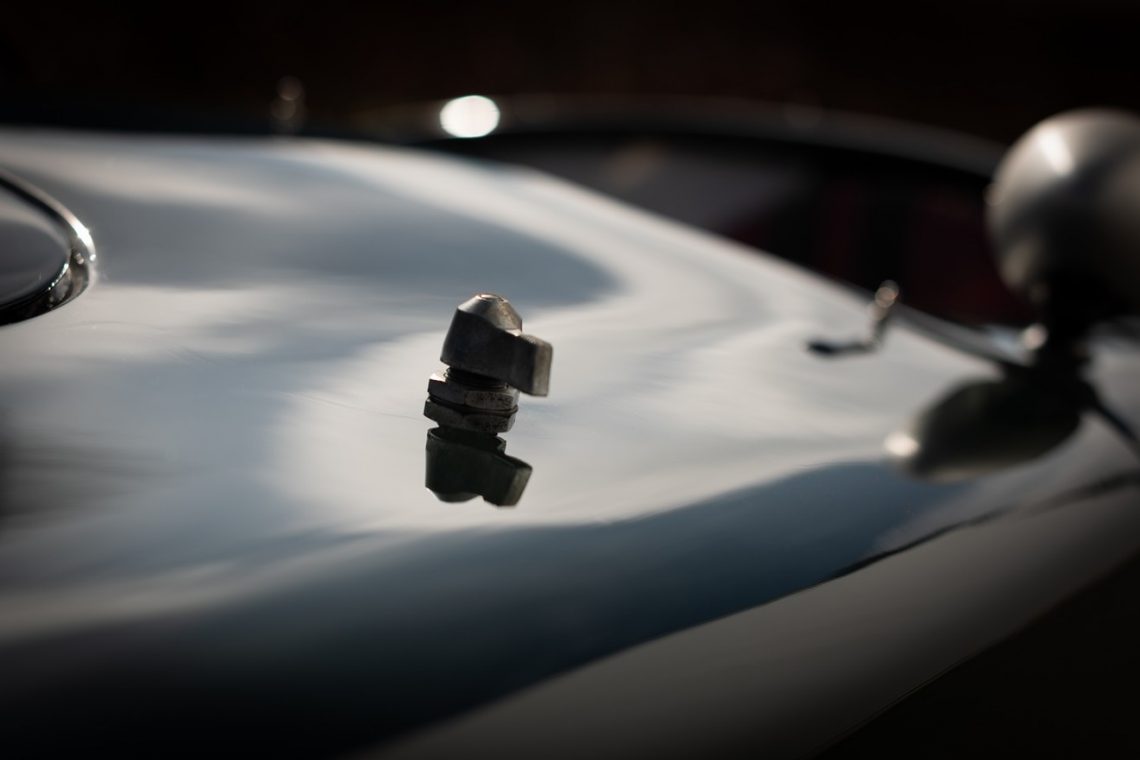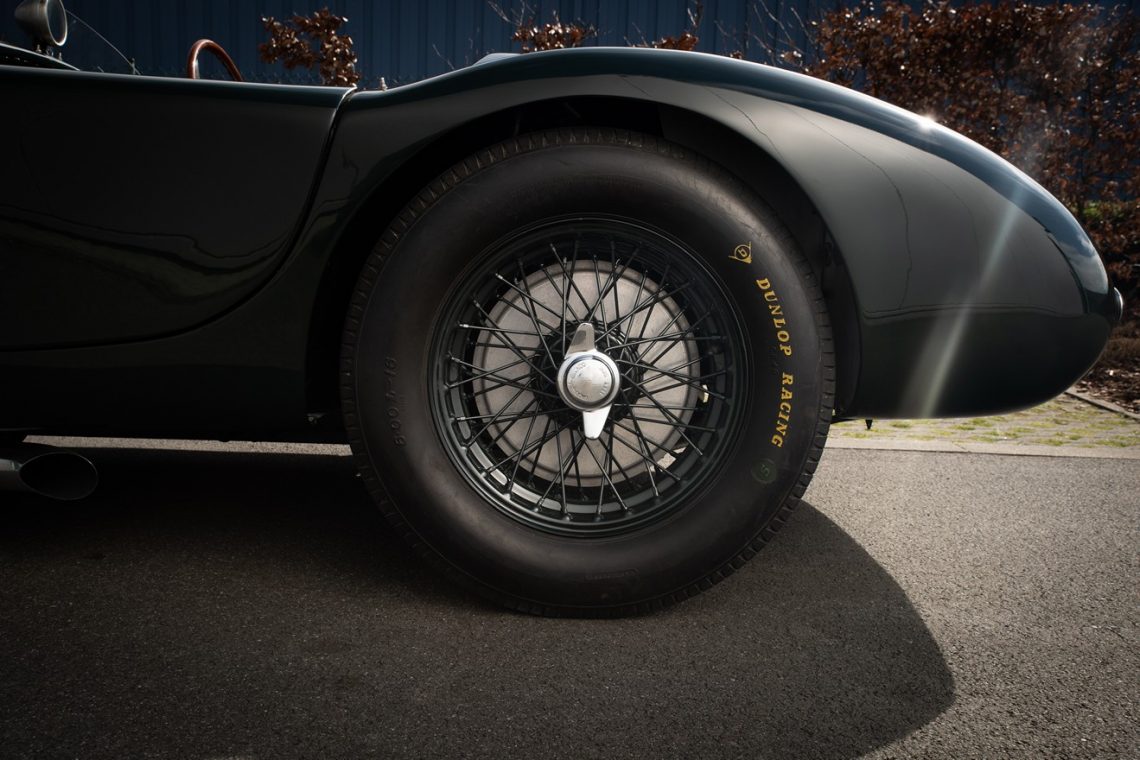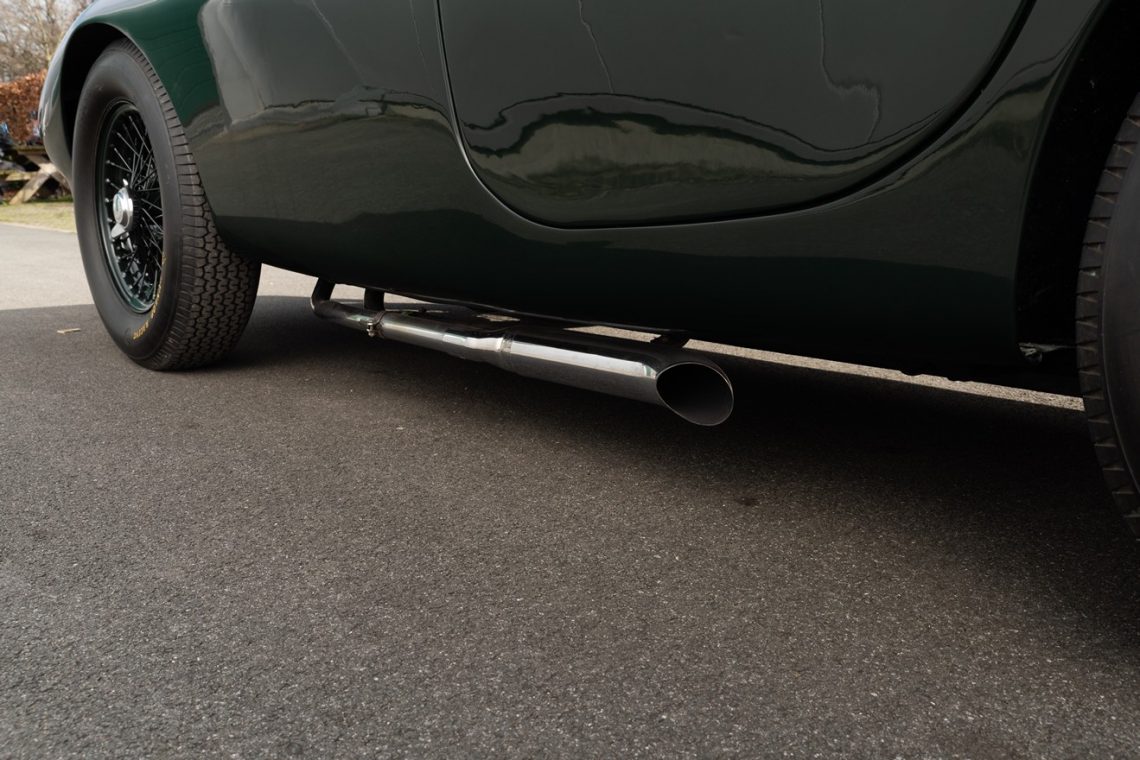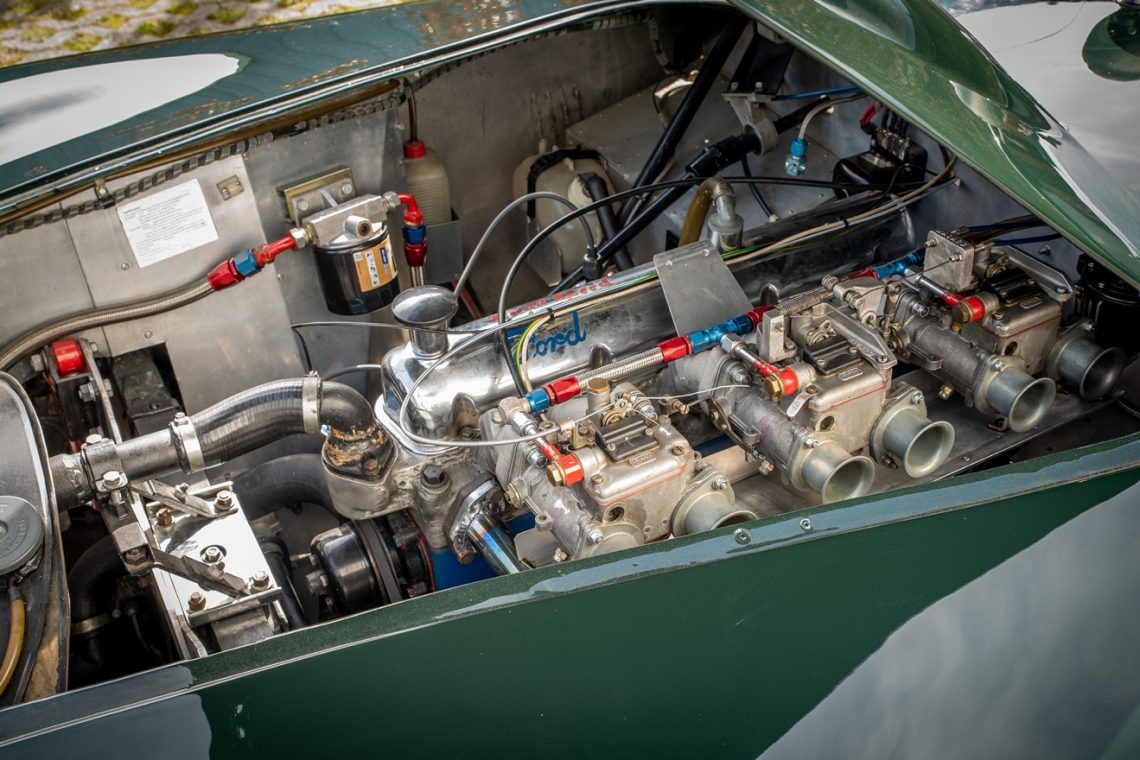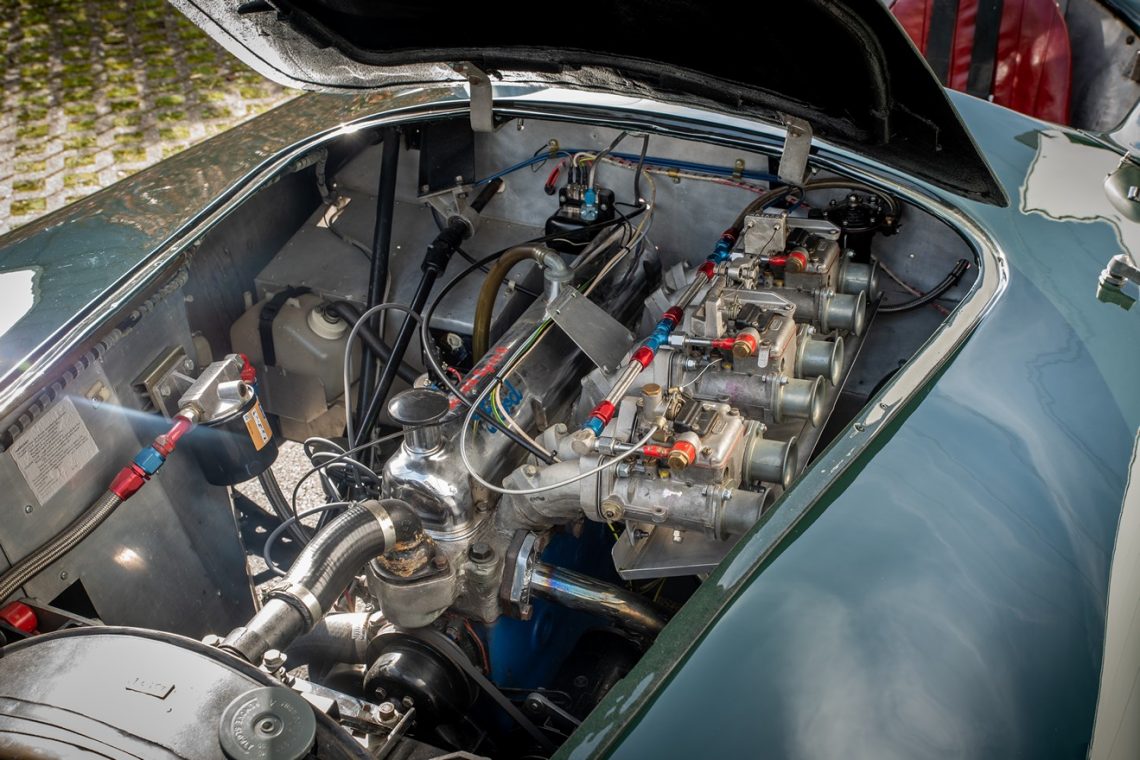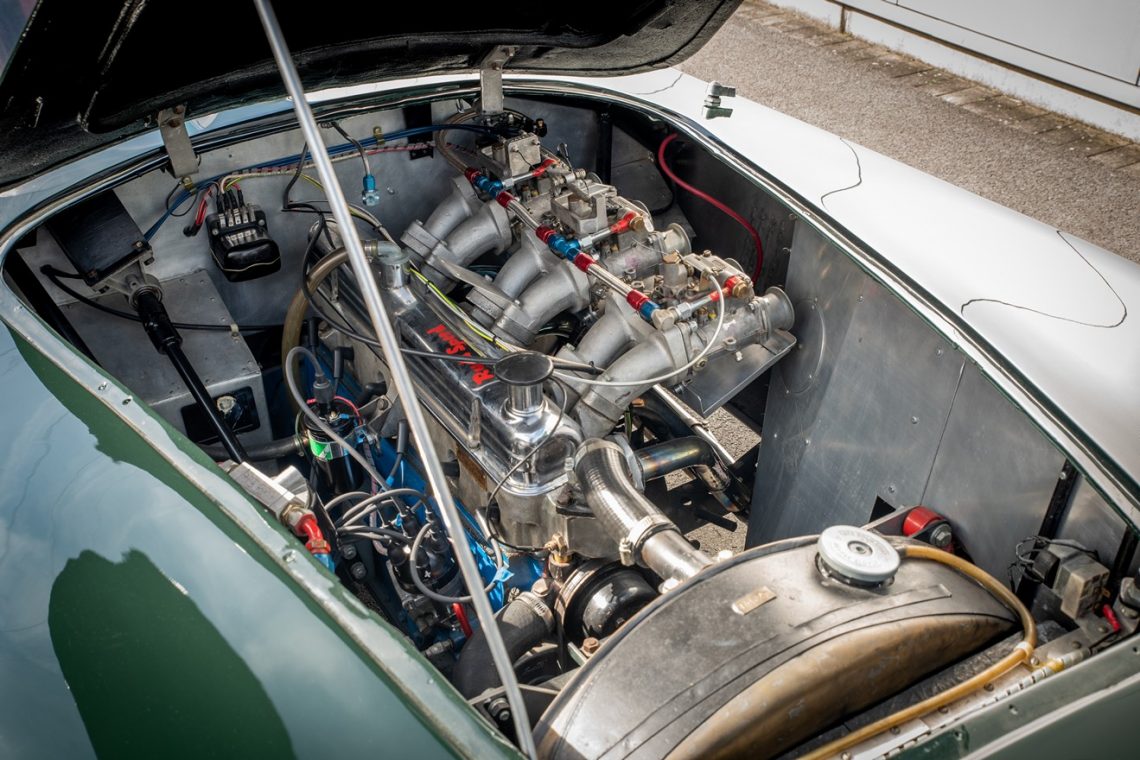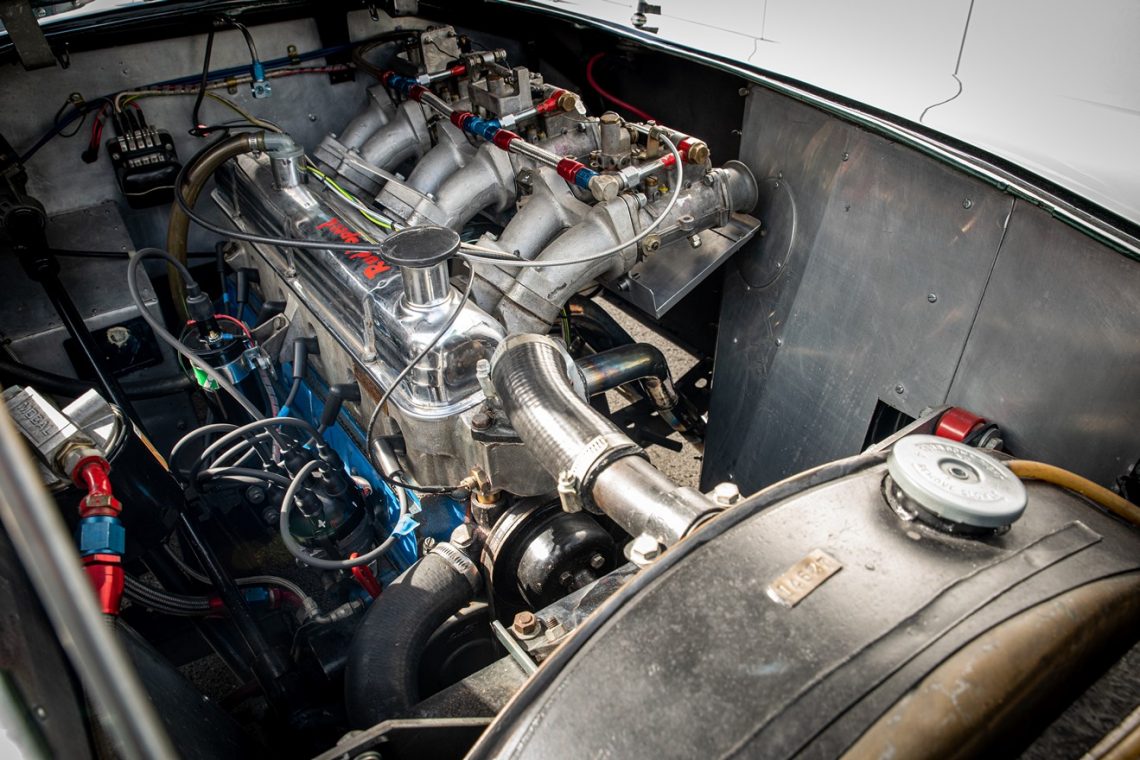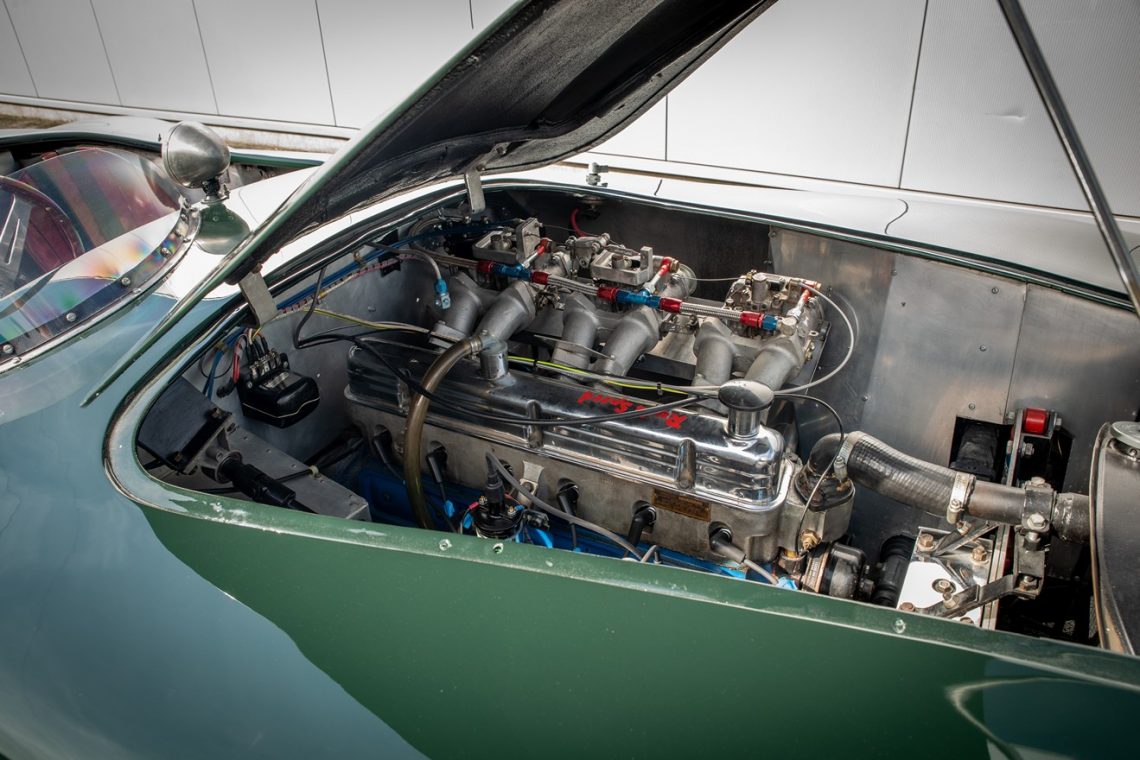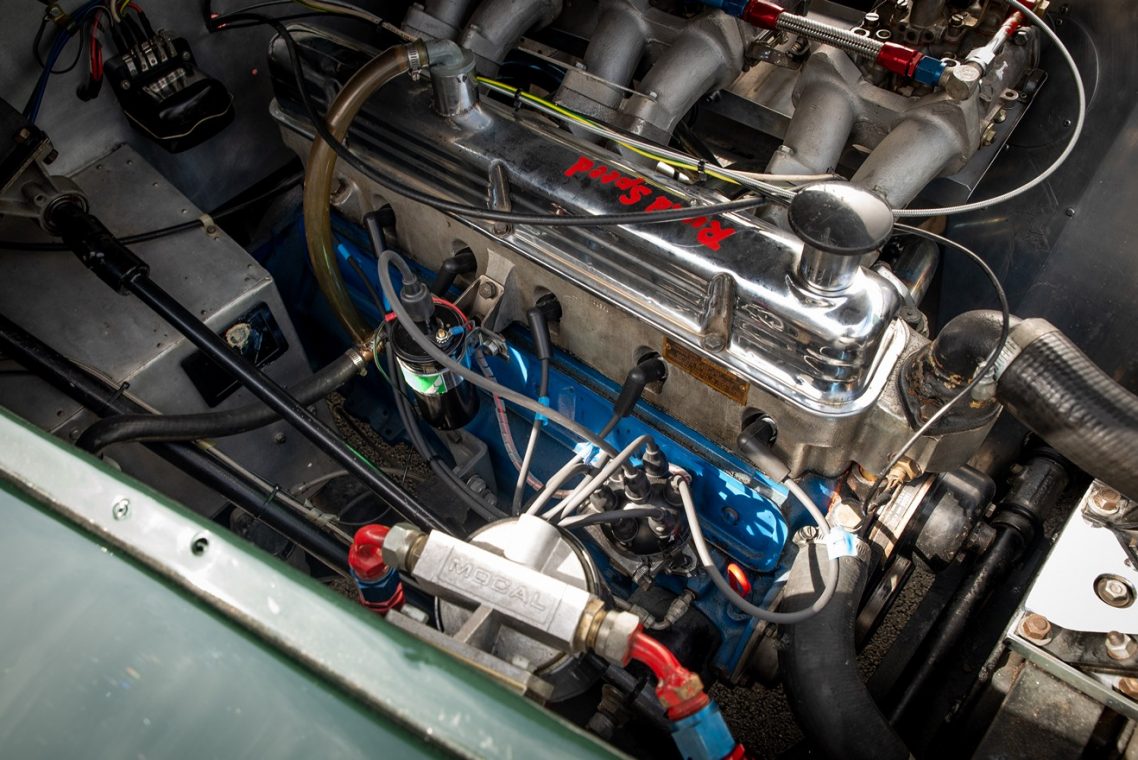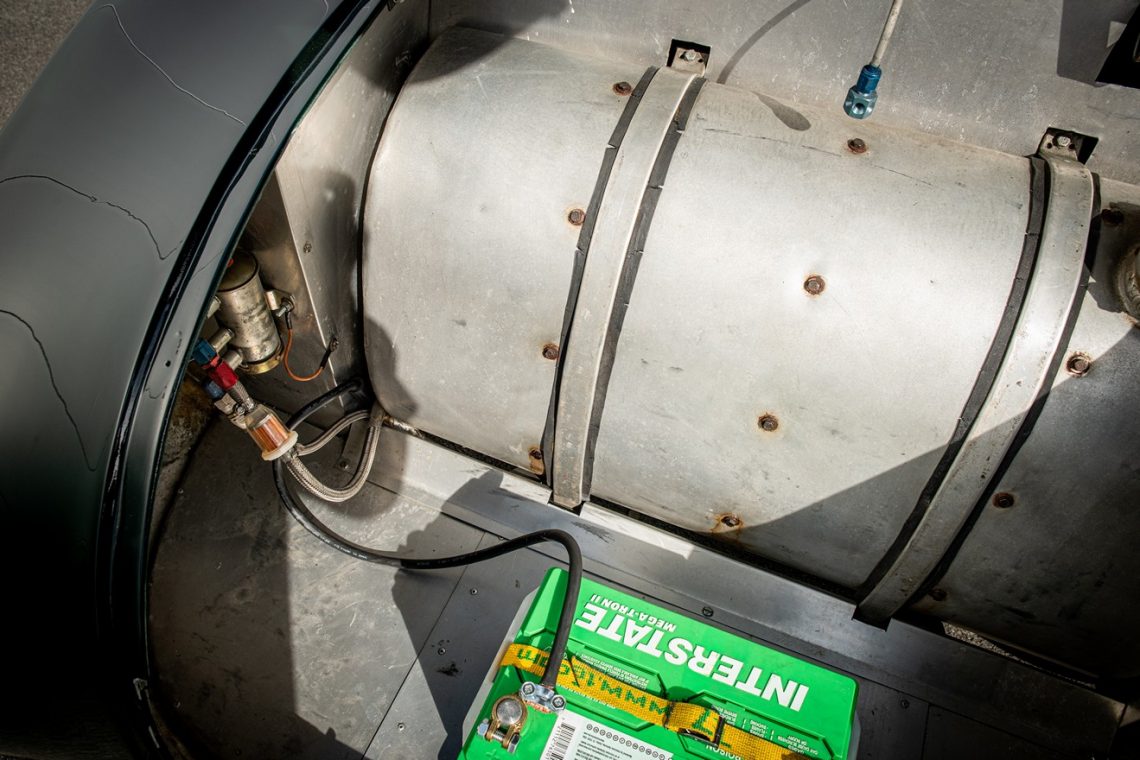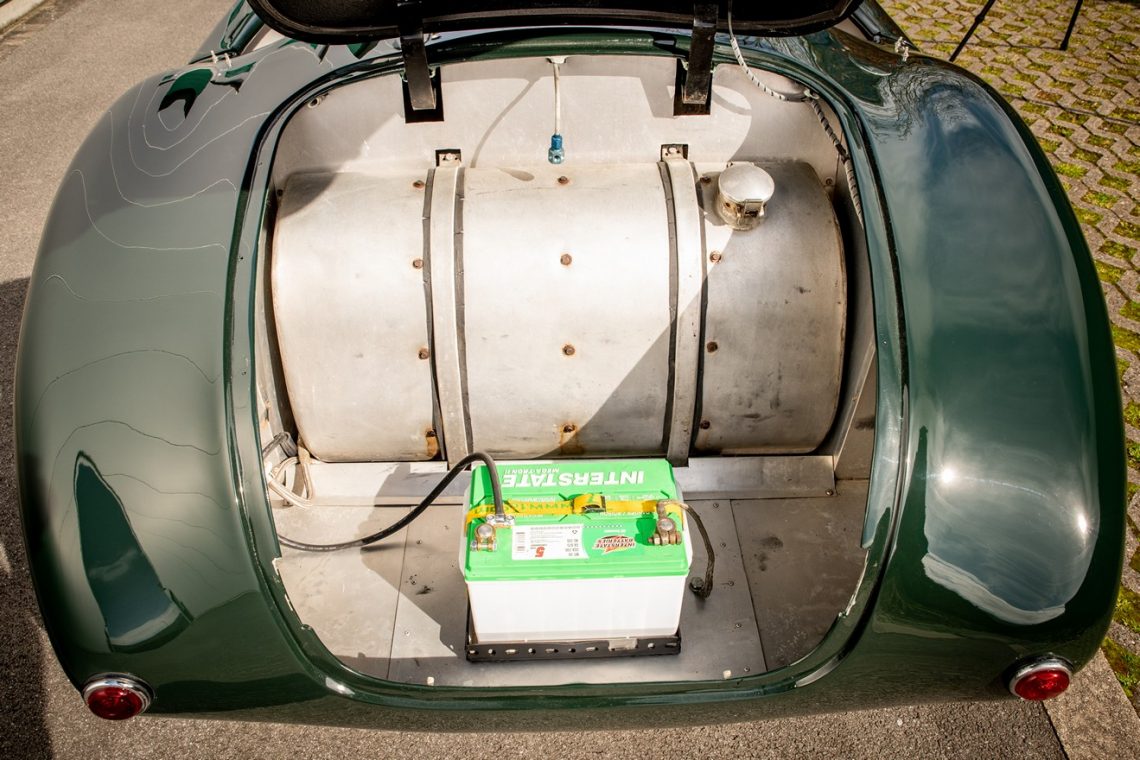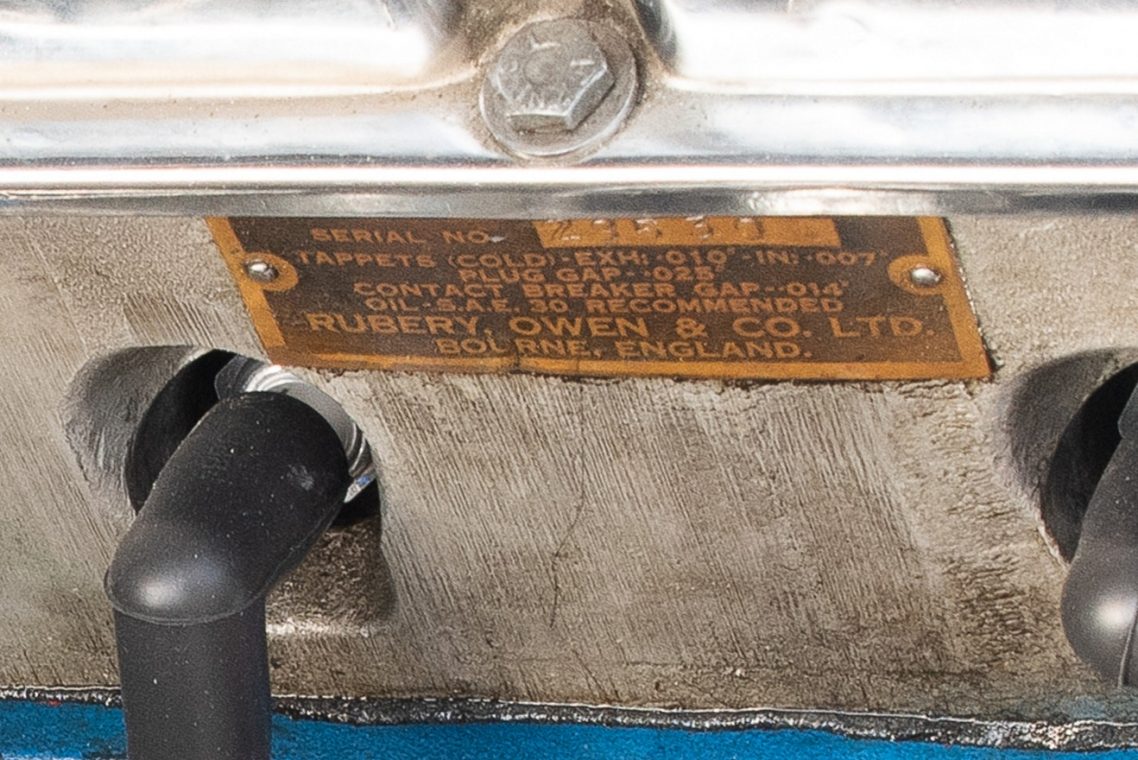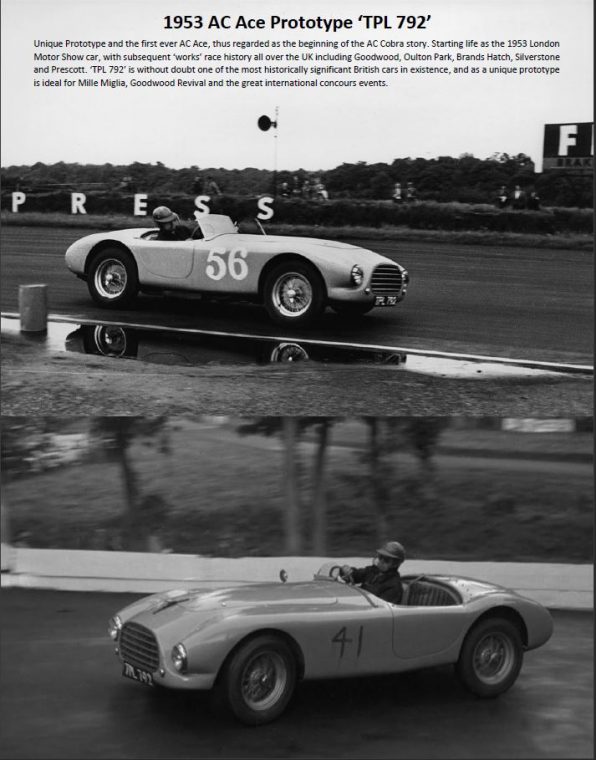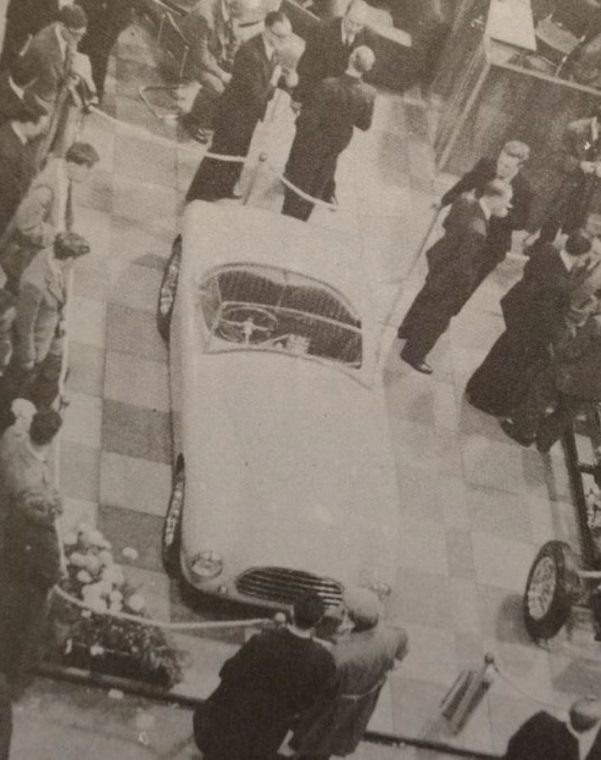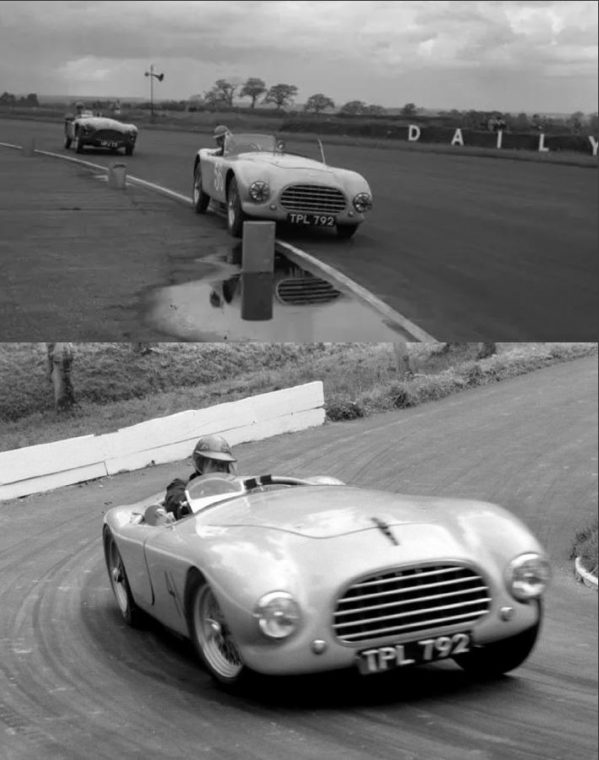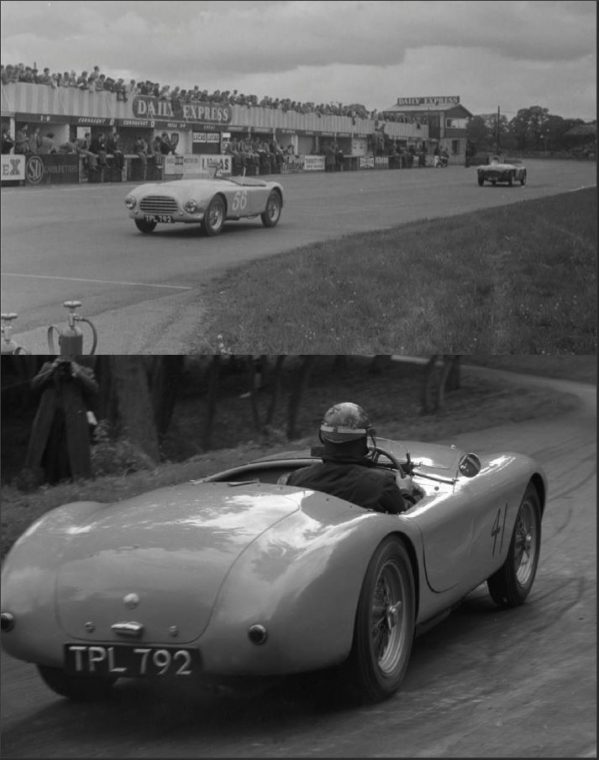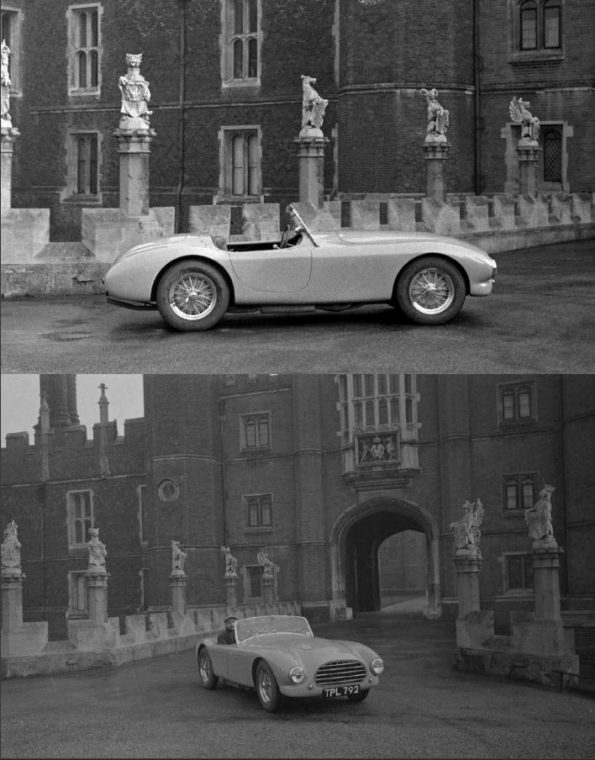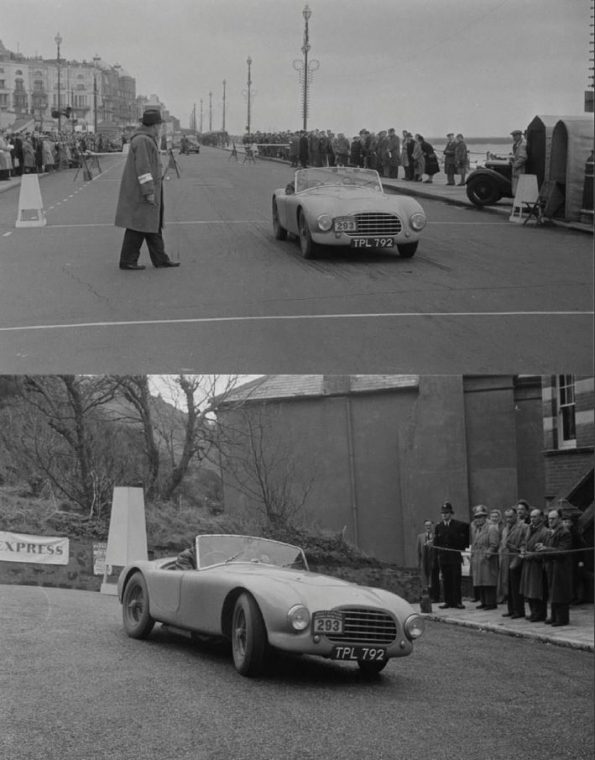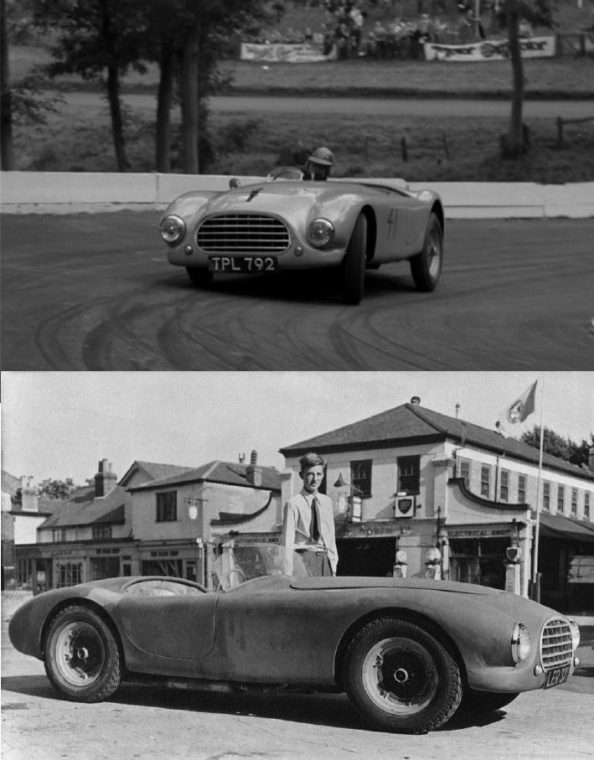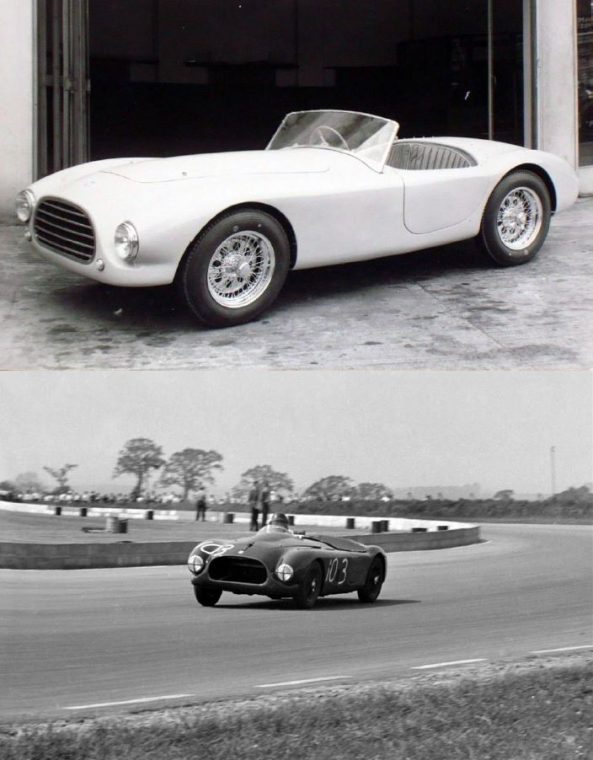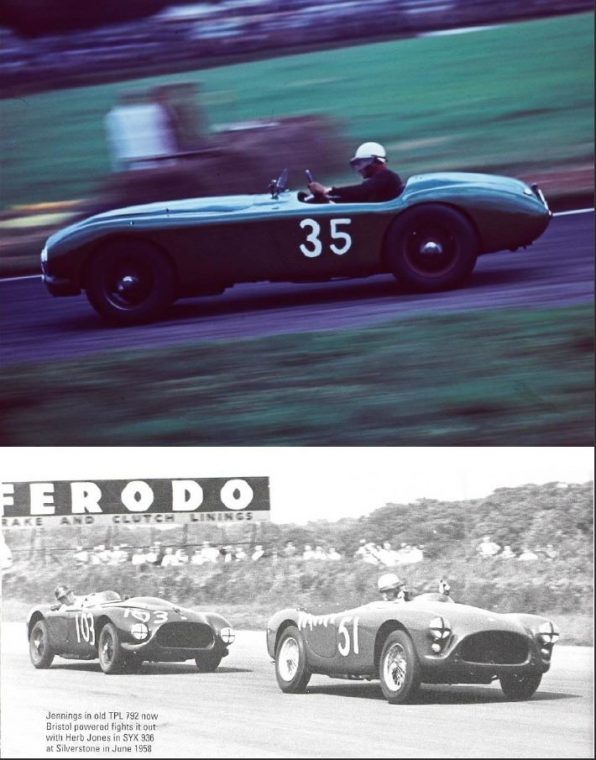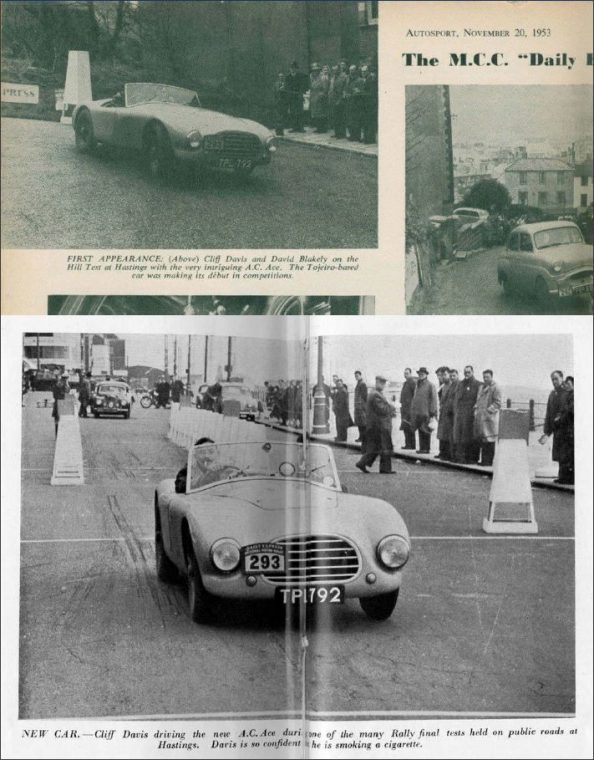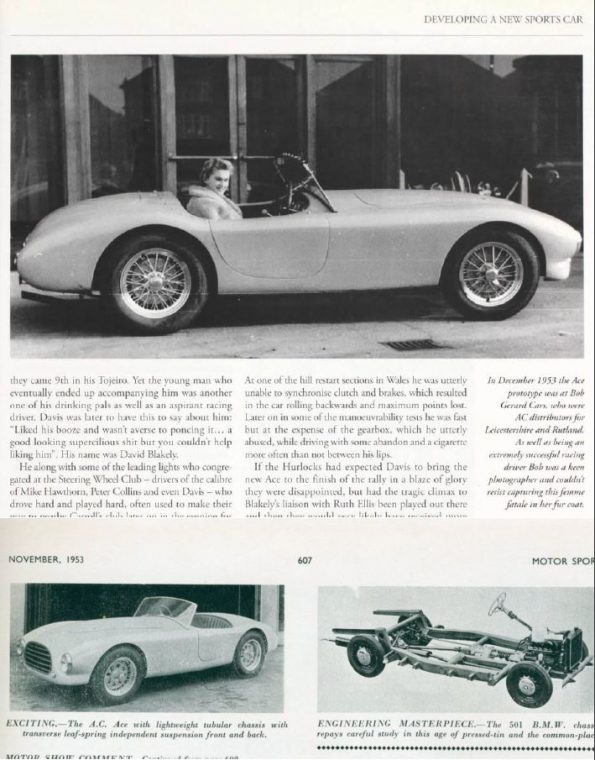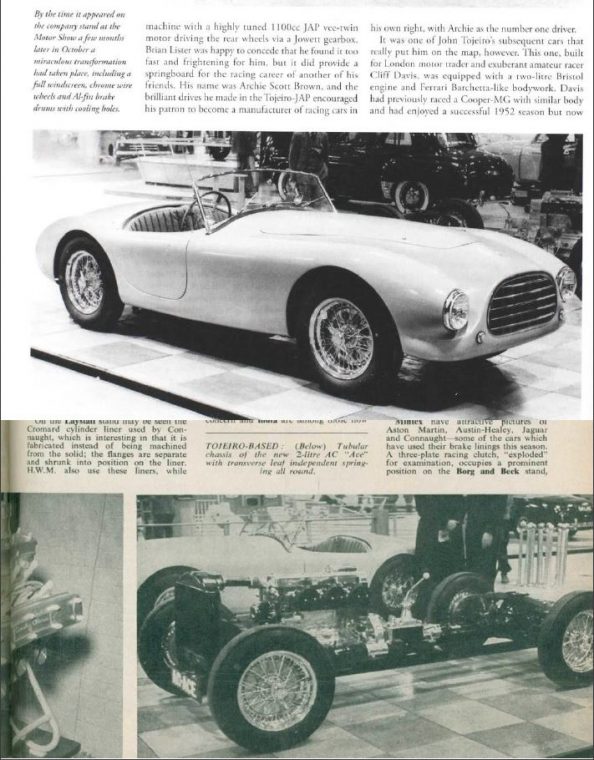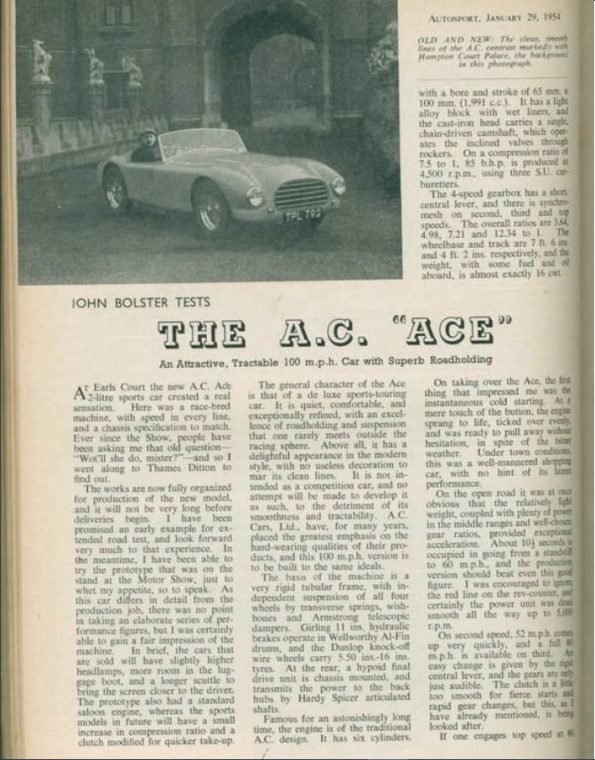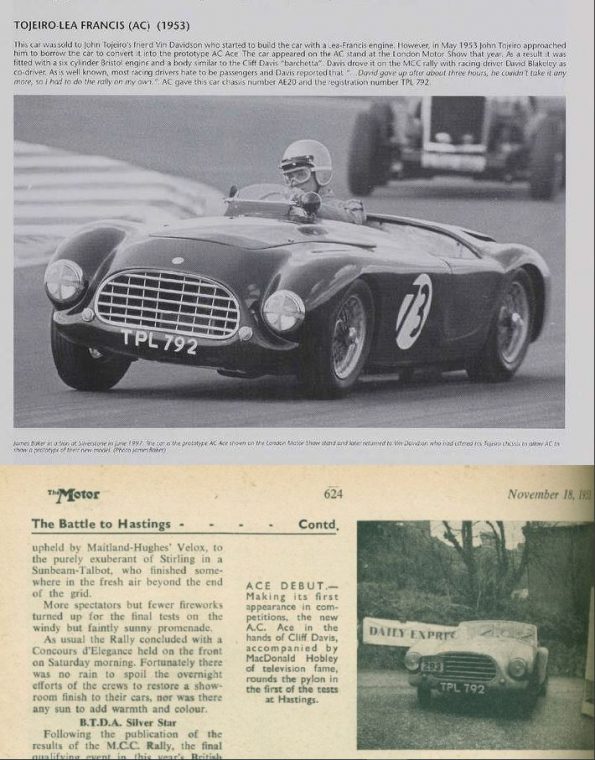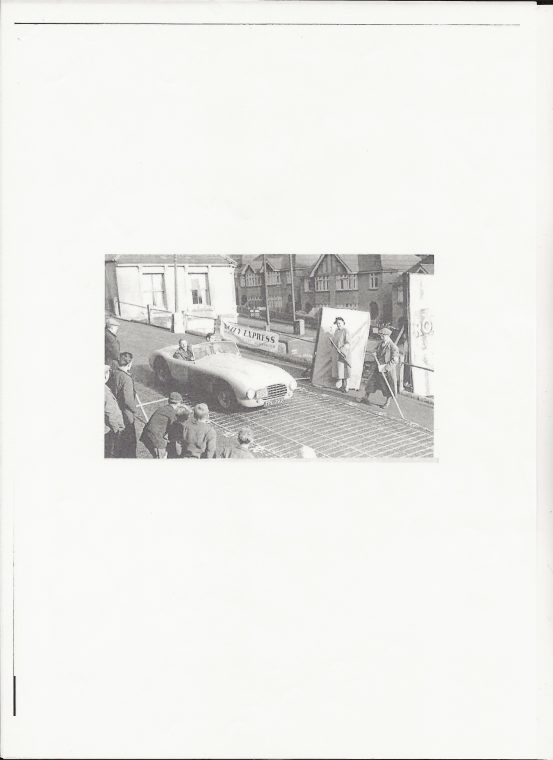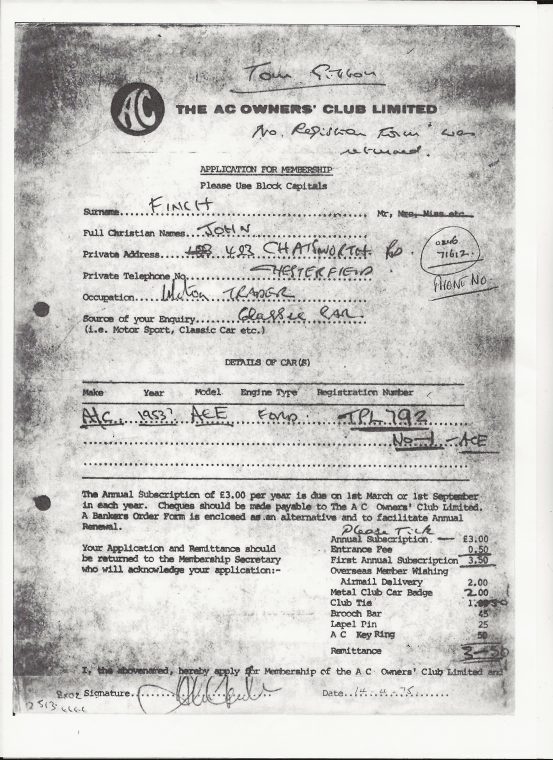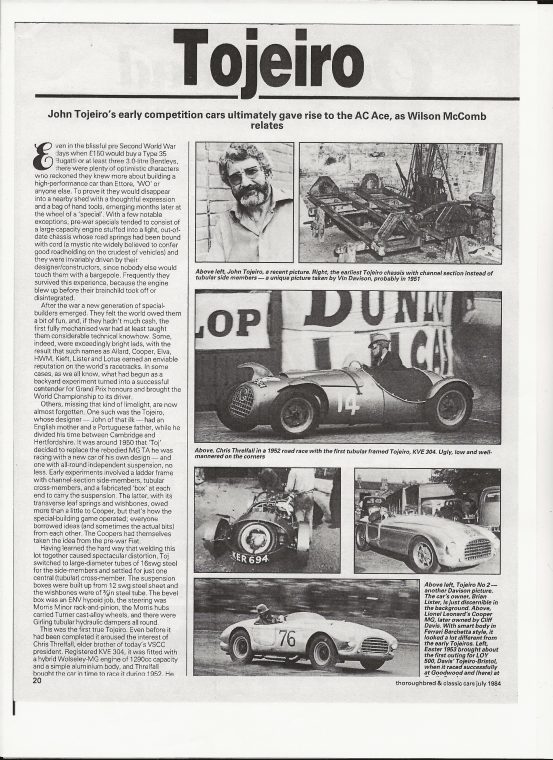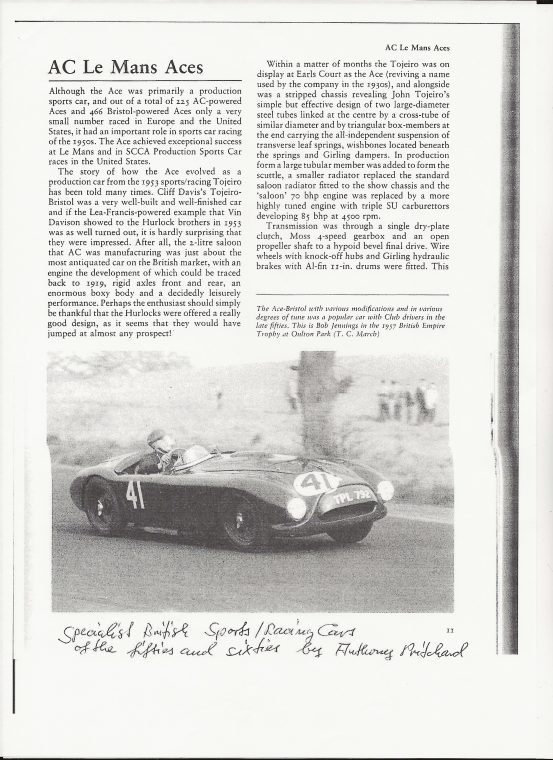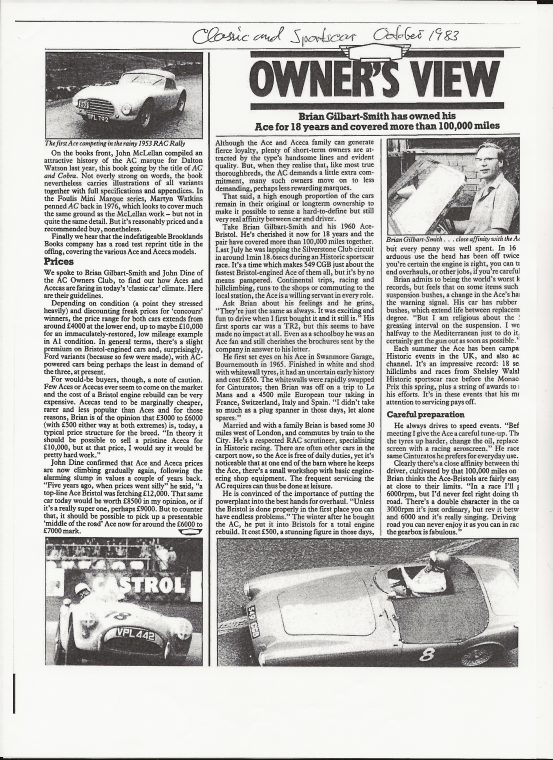1953 AC Ace Prototype ‘TPL 792’
Unique Prototype and the first ever AC Ace, thus regarded as the beginning of the AC Cobra story. Starting life as the 1953 London Motor Show car, with subsequent ‘works’ race history all over the UK including Goodwood, Oulton Park, Brands Hatch, Silverstone and Prescott. Chassis AE20 is without doubt one of the most historically significant British cars in existence, and as a unique prototype is a ideal for Mille Miglia, Goodwood Revival and the great international concours events.
By 1953, John Tojeiro’s reputation for building competitive sports racers was well-established. When friend Vin Davison approached Tojeiro to build a sports car with a Barchetta body, neither could have predicted that the model would make automotive history, evolving into the AC Ace, and later, the Shelby Cobra. After being shown at the Simeone Foundation Automotive Museum’s AC Cars Retrospective in February 2017, AC Ace #AE20, the car built for Davison and later pitched to AC.
Davison’s car wasn’t the first Barchetta – inspired by Ferrari’s 166 MM – built by Tojeiro. Instead, that honor goes to a Bristol-powered example ordered by Cliff Davies and registered in Britain as LOY 500. Two more MG-powered examples – registrations LOY 501 and LOW77 – were built before Davison placed his order, to be powered by a 2.5-liter Lea-Francis four-cylinder, procured from race car builder Connaught Engineering. Delivered in the summer of 1953, Davison’s car carried registration LER 371.
At the same time, British automaker AC was desperately seeking a new model to enhance its product line, supplementing the outdated 2-Liter saloon and convertible. Ernie Bailey, whose Buckland Bodyworks occasionally contracted with Tojeiro to paint bodies bound for AC, suggested that the Barchetta may be just what AC needed to revive its business. A meeting was set up by Bailey, and Tojeiro borrowed LER 371 from Davison for the demonstration.
Tojeiro’s sports car impressed the Hurlocks, owners of AC, but an important next step would be to gauge interest from attendees of the 1953 Earls Court motor show. AC wanted one of Tojeiro’s Barchettas in its booth, but there wasn’t sufficient time to complete another example. Instead, AC bought LER 371 from Davison, offering him an engineering job developing the Ace to sweeten the deal. Tojeiro, for his role in designing the car and putting together the pitch, received royalties of £5 per car, but only on the first 100 cars sold. He also agreed to build one more bare chassis for AC, which would serve as a model from which to build the necessary frame jig.
In the transition from Tojeiro Barchetta to AC Ace, Davison’s former car received a 2.0-liter AC inline six engine, as well as new blue paint and registration tag TPL 792. The car also received a metal-framed windshield in place of the original plexiglass screen, a folding top, interior trim and wire wheels to replace the Turner aluminum wheels typically favored by Tojeiro. The prototype retained its Morris Minor-derived rack and pinion steering, though production models would use a Bishop Cam steering box.
Ironically, the AC Ace wasn’t thought of as a racing car. As Rinsey Mills wrote in AC Cobra: The Truth Behind the Anglo-American Legend, reviewer John Bolster of Autocar magazine penned in the car’s first write-up, “It is not intended as a competition car, and no attempt will be made to develop it as such…” His prediction didn’t prove true for long, since TPL 792 competed in the December 1953 Daily Express MCC Rally, where it was driven by Cliff Davis.
In May 1954, Davison had the opportunity to race his old car – perhaps researching suspension development for the production Ace – at the Silverstone Eight Clubs Meeting, where TPL 792 took second place. Basil de Mattos was the next owner, and he ran the car in five events throughout 1954 and 1955, earning three podium finishes.
In 1956, the car sold to Robert “Bob” Jennings, who traded a Bristol engine for the AC six and campaigned the car, with reasonable success (including wins at Brands Hatch and Silverstone), through the 1957 racing season. The Ace prototype remained in the U.K., passing through four more owners, until the 1980s when it was exported to the United States, powered by a 2.6-liter Ford Zephyr engine topped by a Rudd Speed Raymond Mays head reportedly installed in the 1970s. Actively campaigned on the vintage racing circuit, the prototype later received a comprehensive restoration, during which it was finished in the white livery it wears today.
Without TPL 792, there may have been no AC Ace, and subsequently, no Shelby Cobra. At the very least, these cars would have been significantly different from the models that forever shaped the face of open sports cars.
Car Equipment
- +Manual Transmission
- +Right hand drive
- +2 seats
- +Leather interior
- +convertible
- +Soft top roof
- +2 doors

